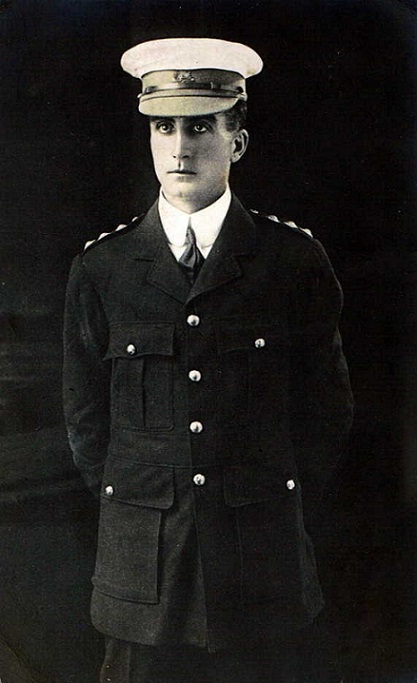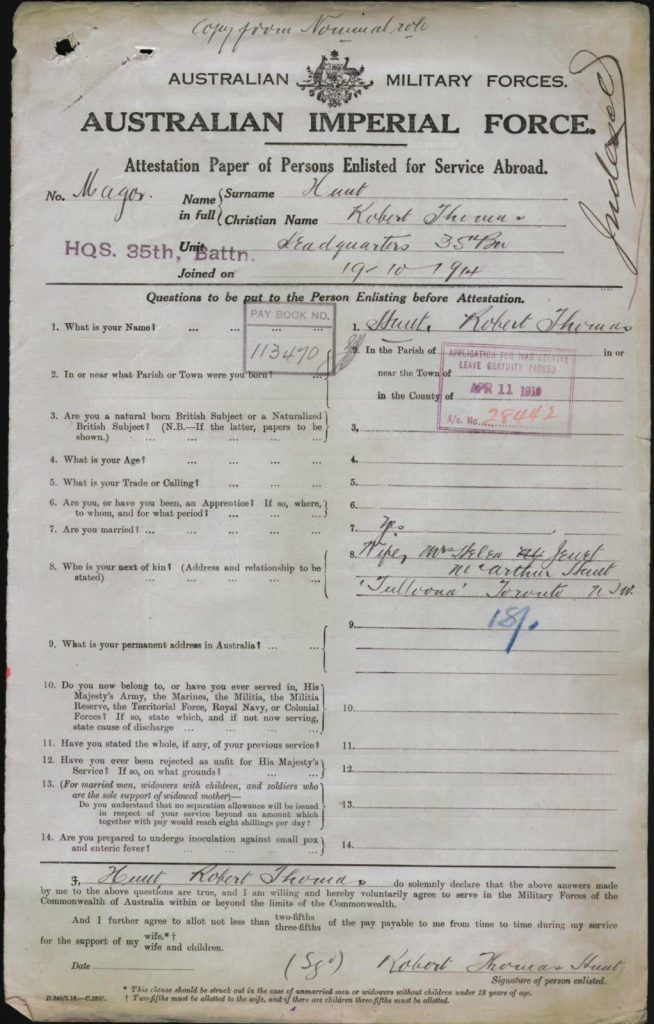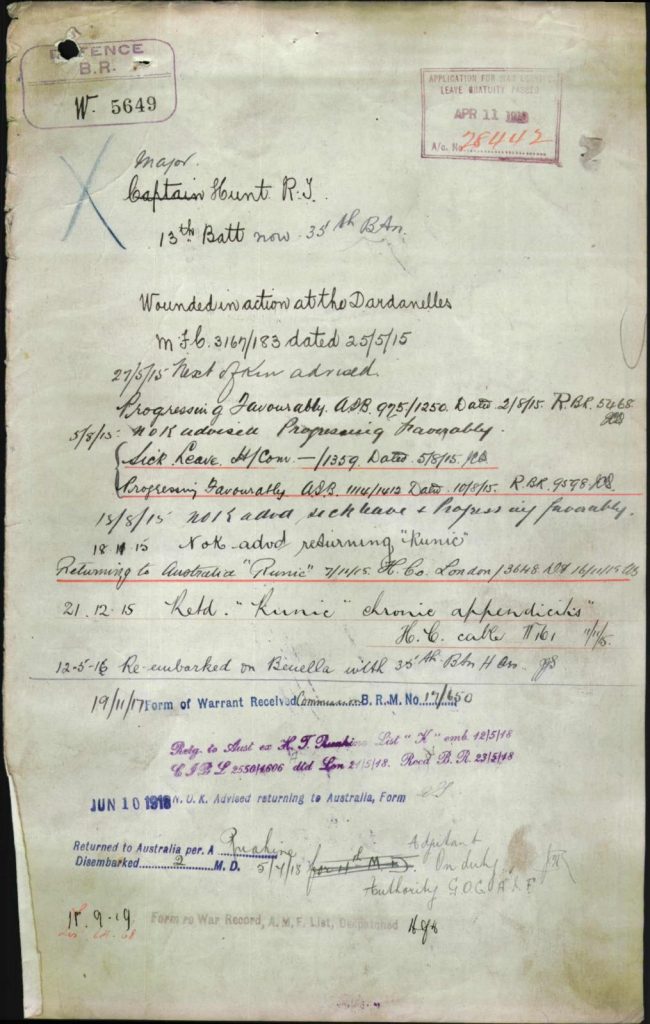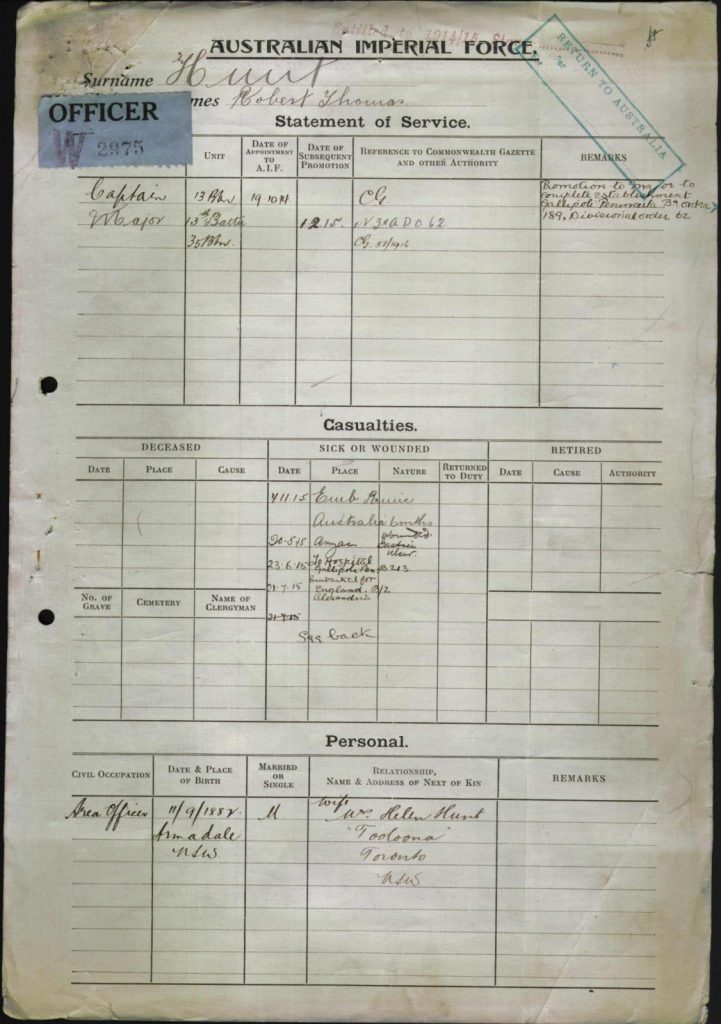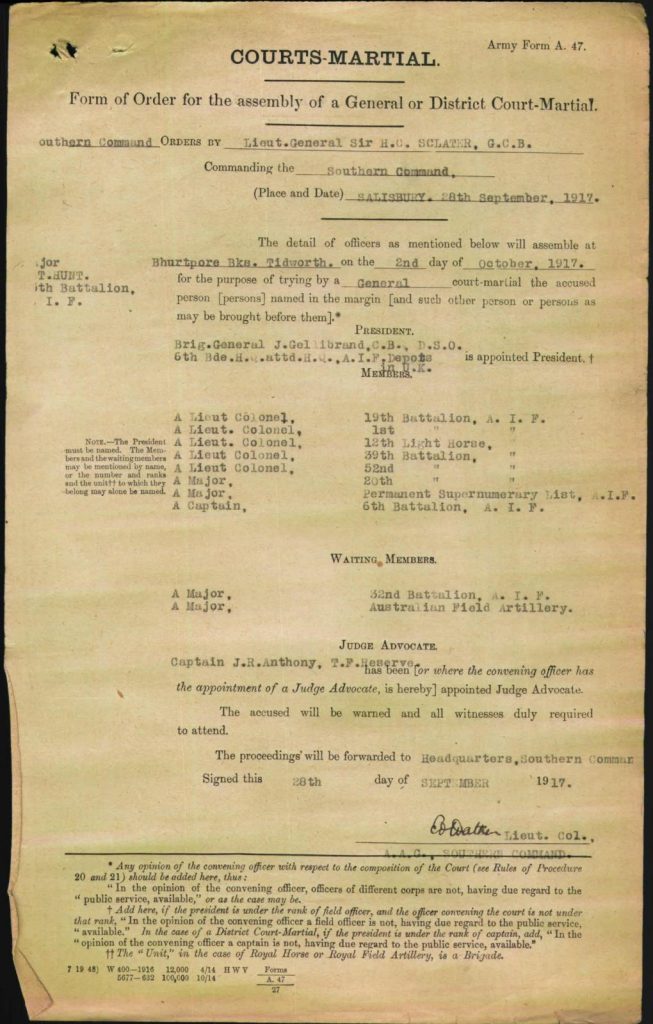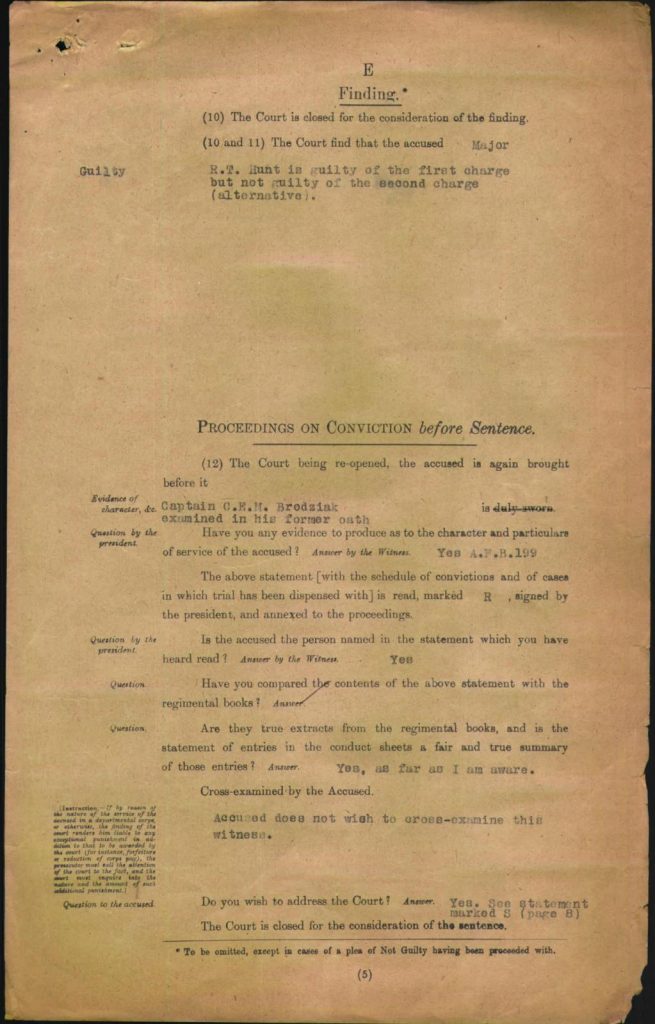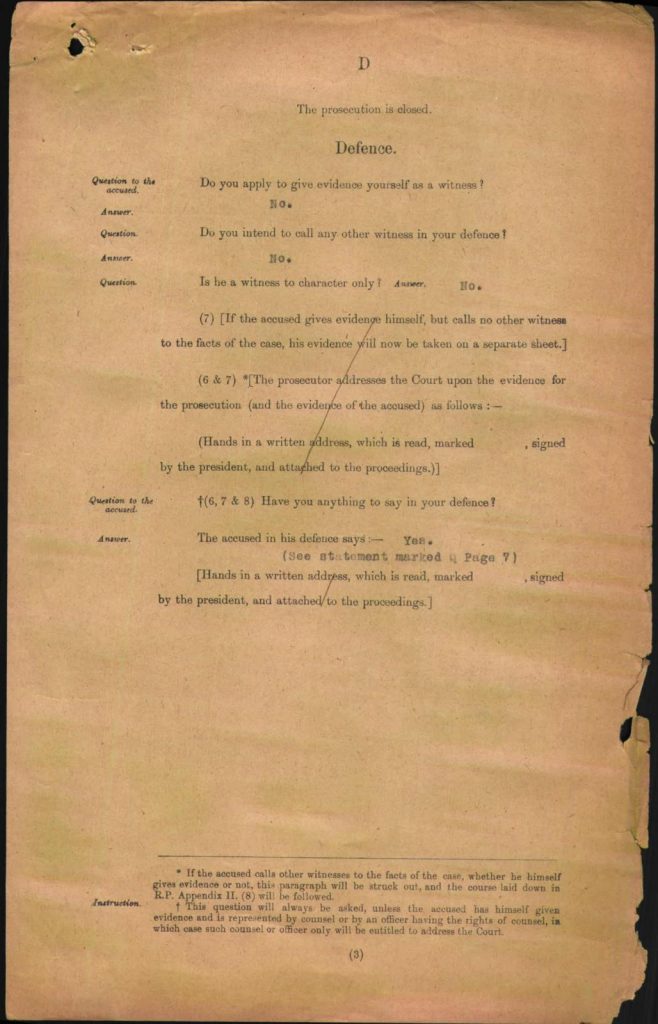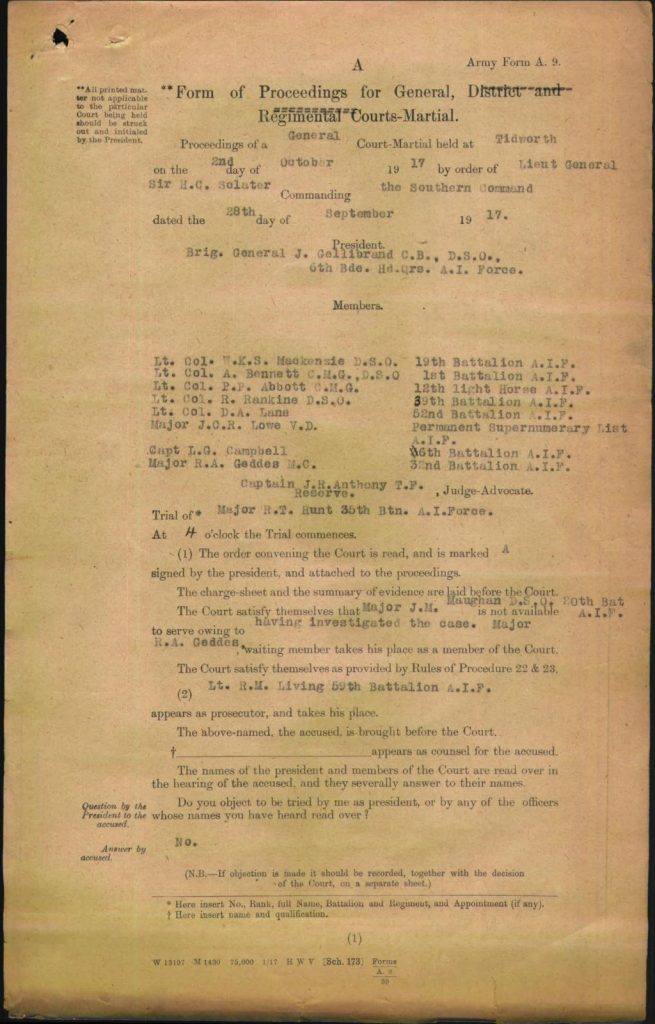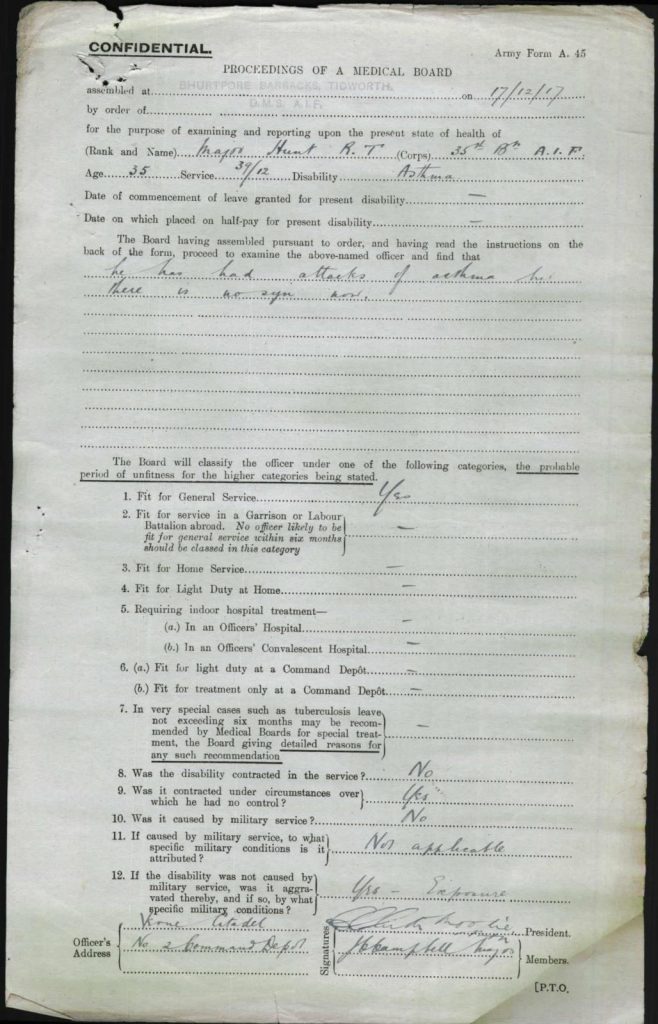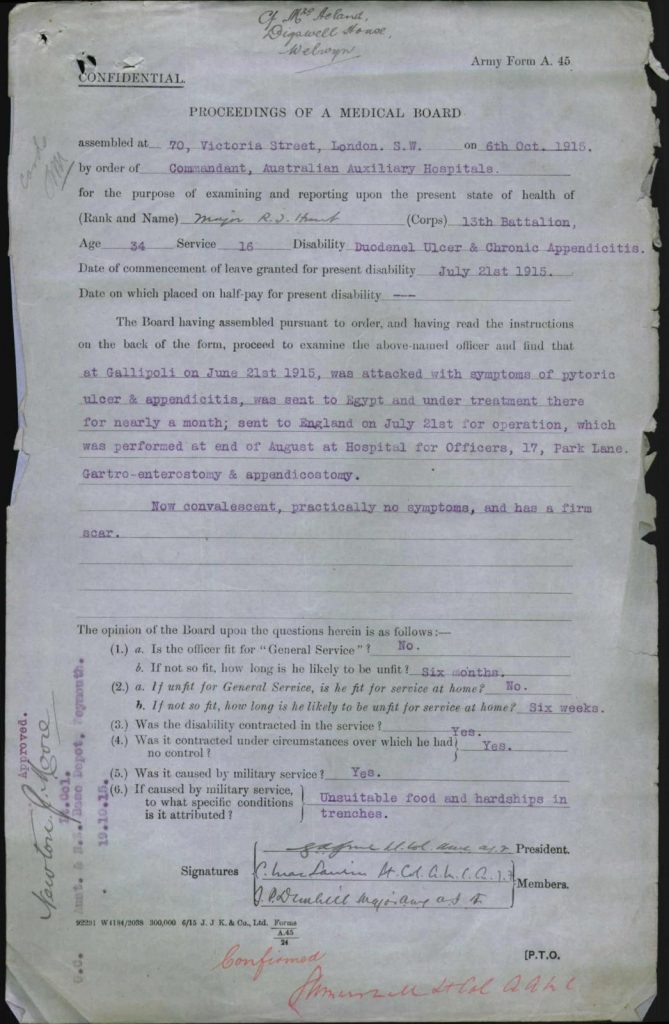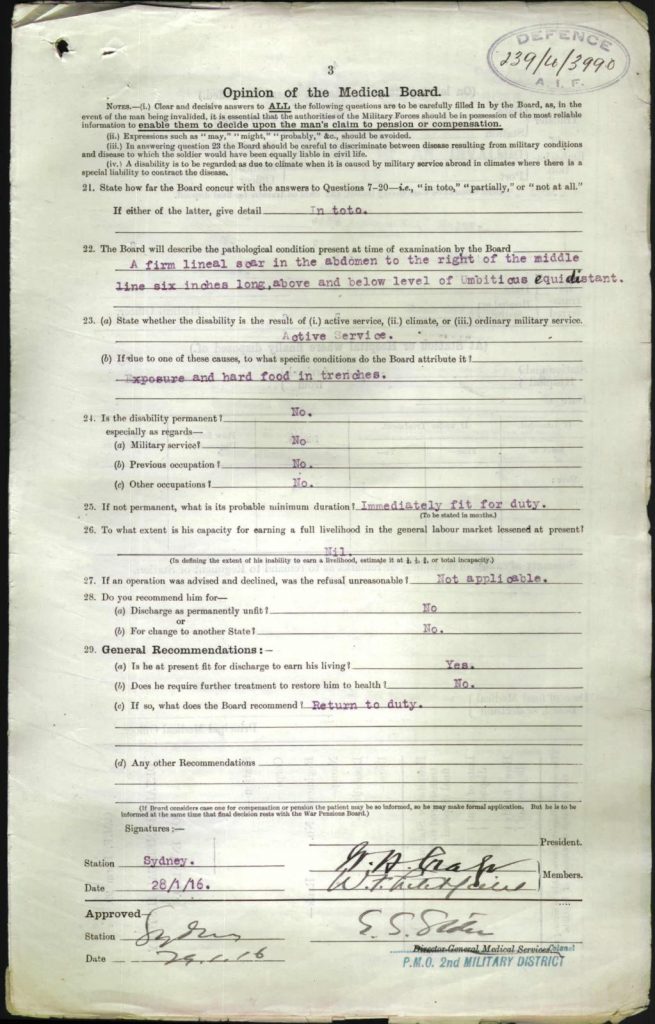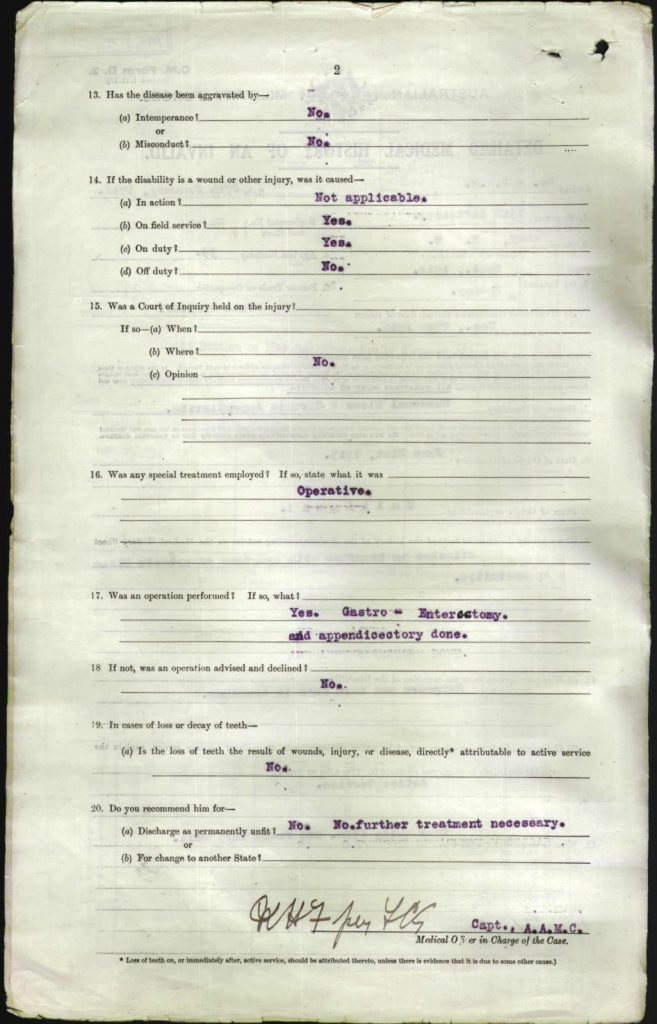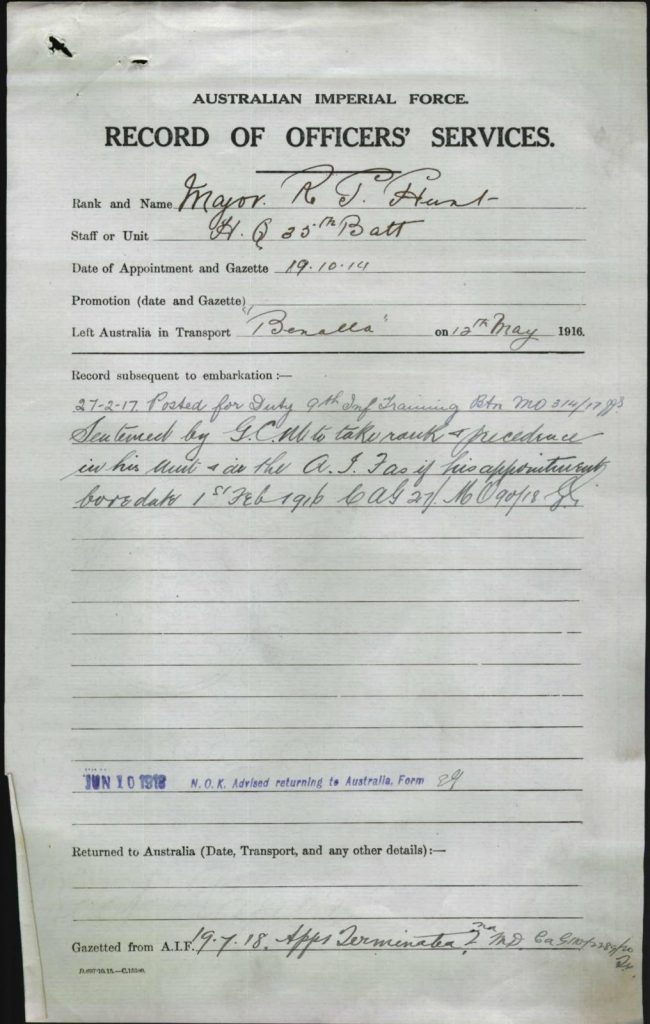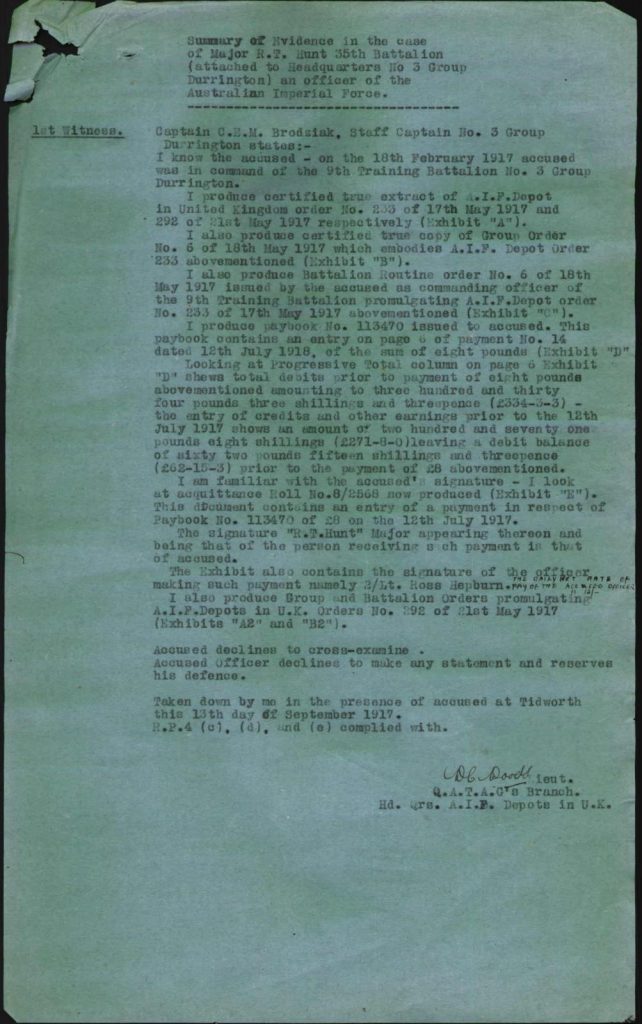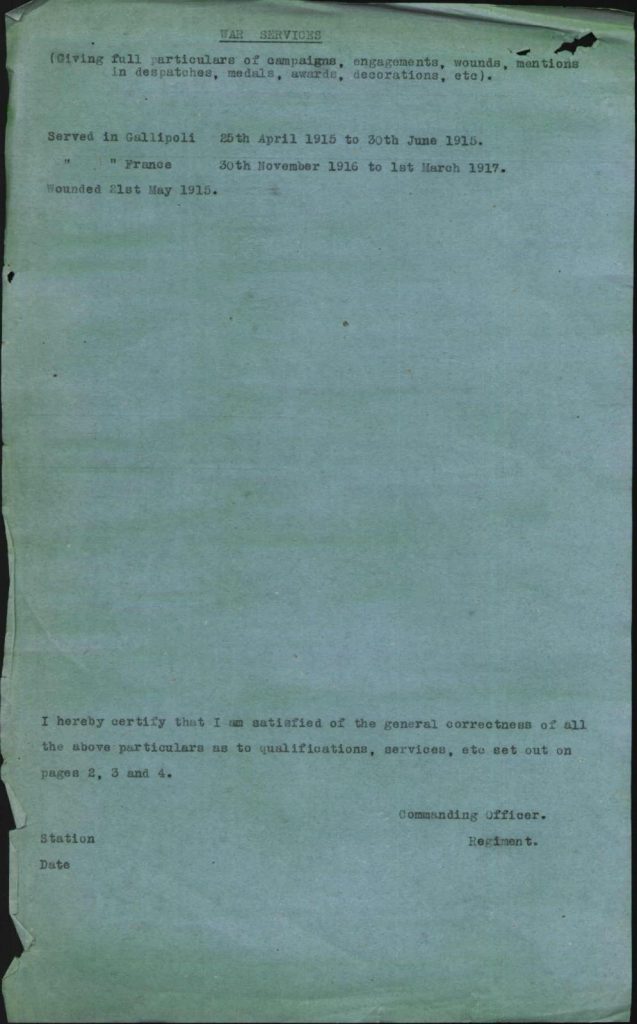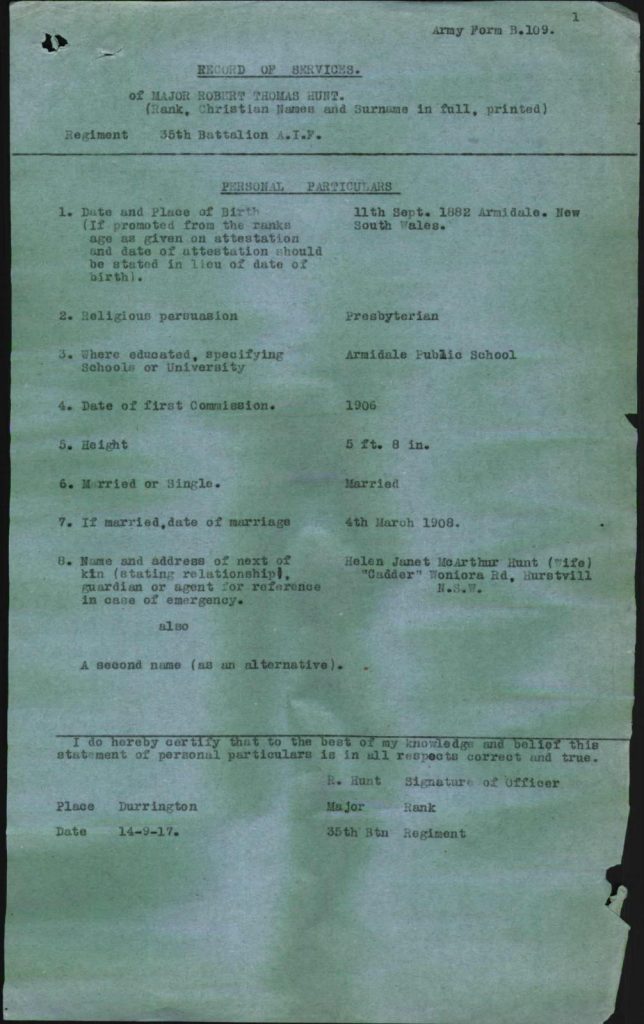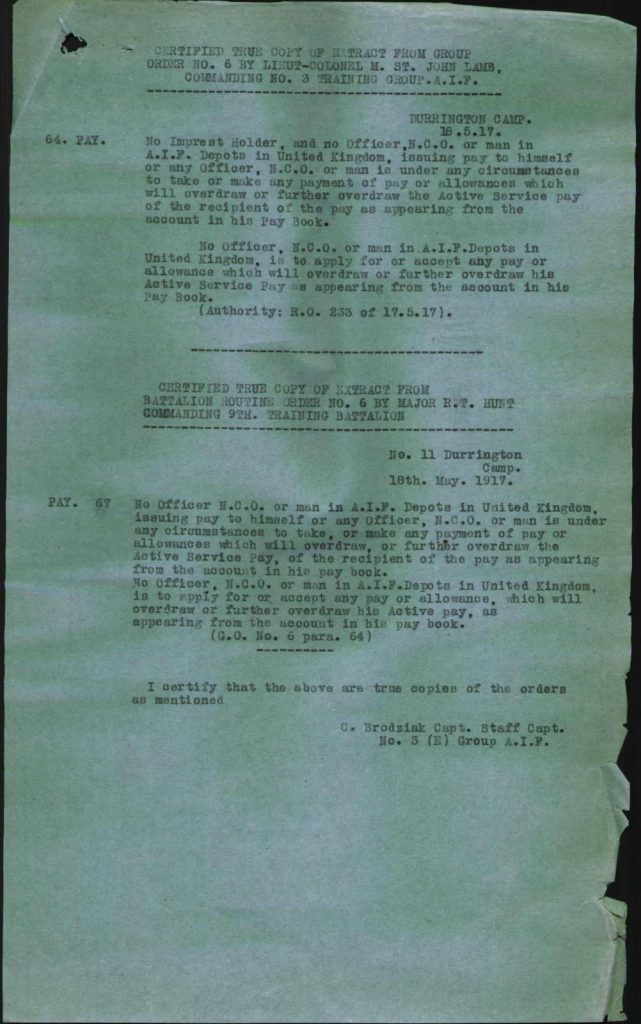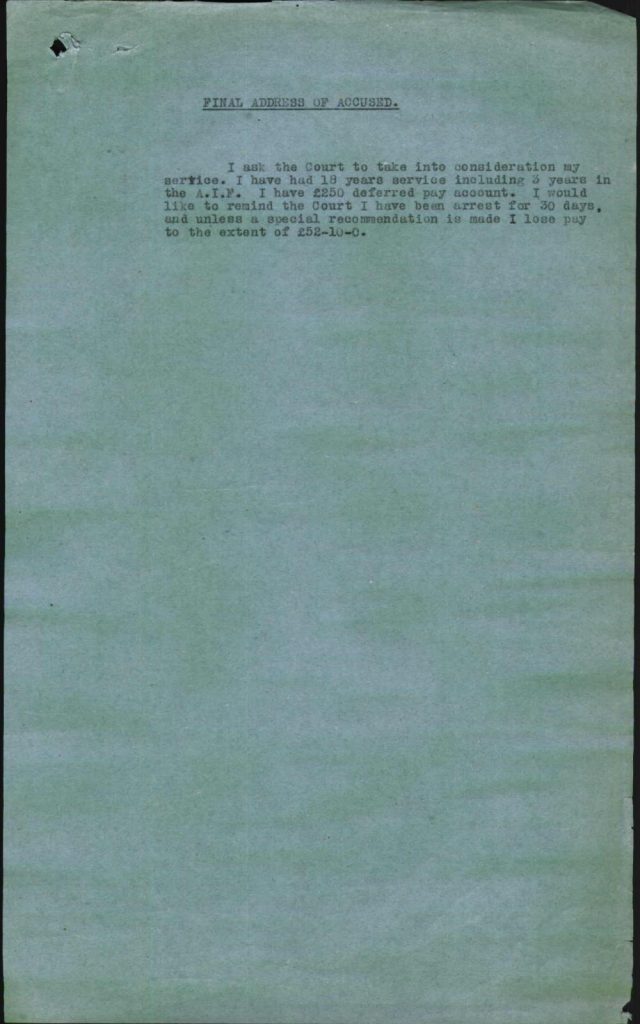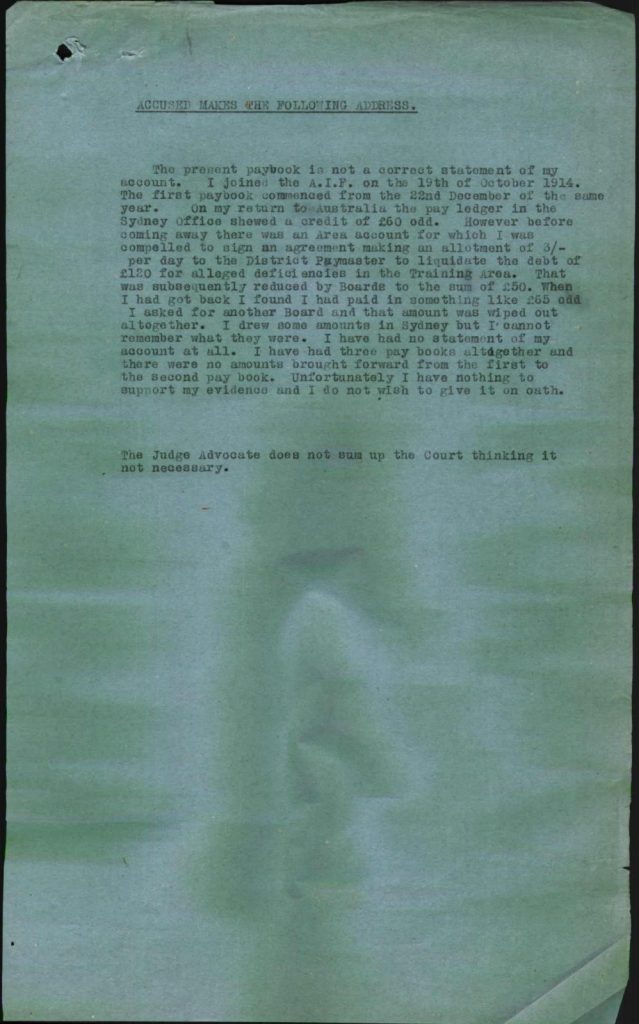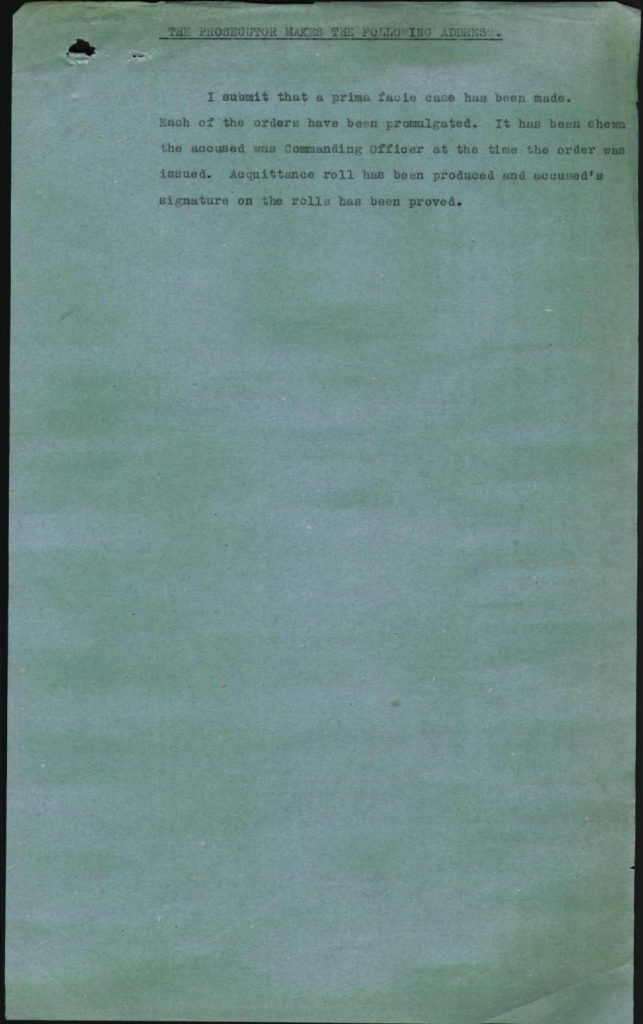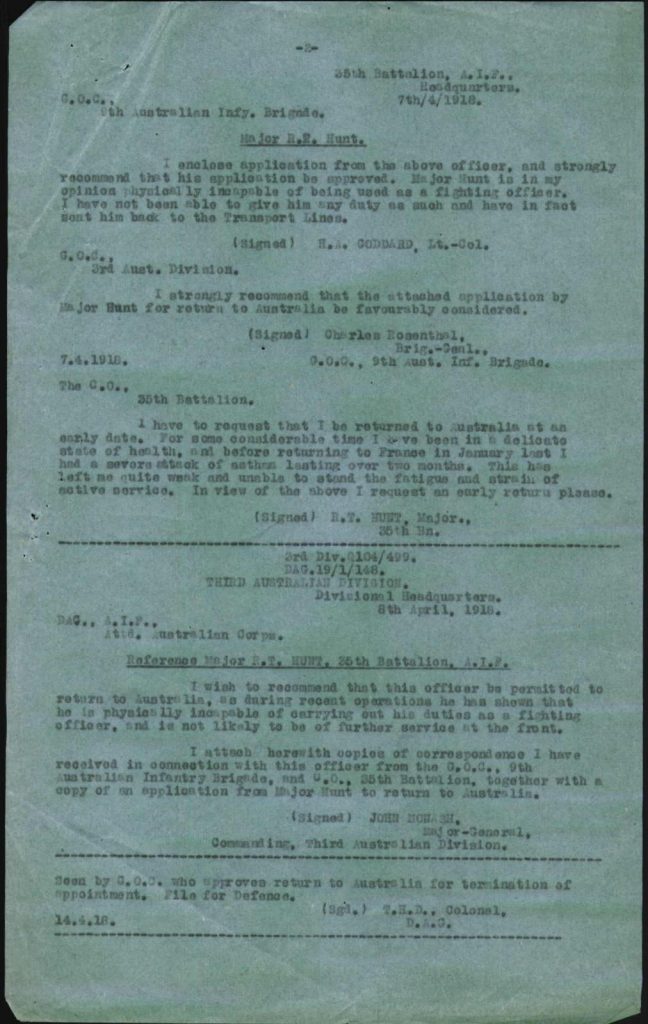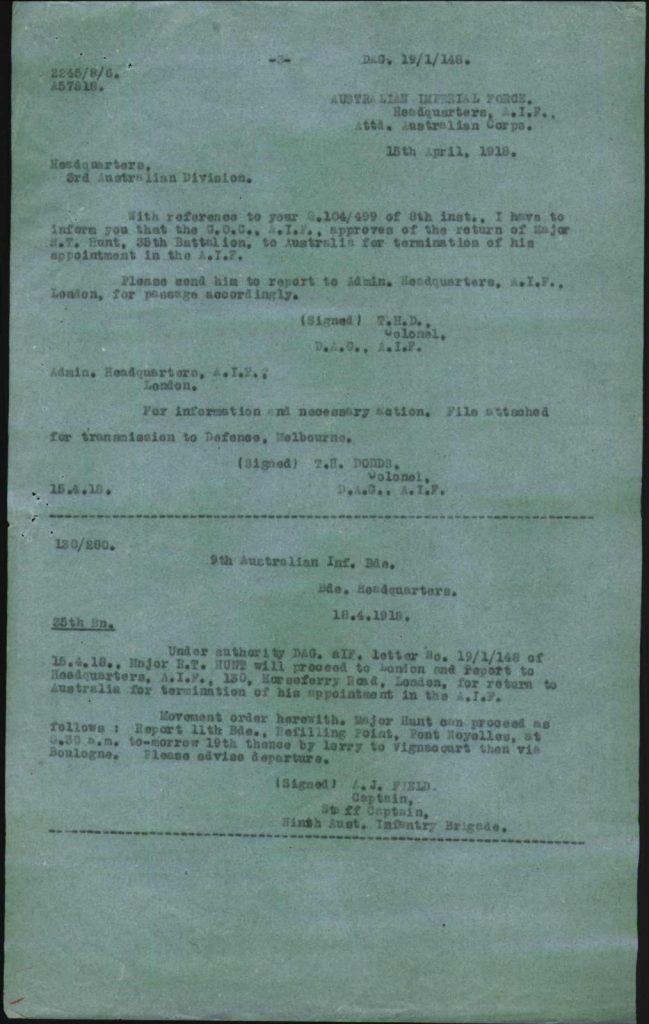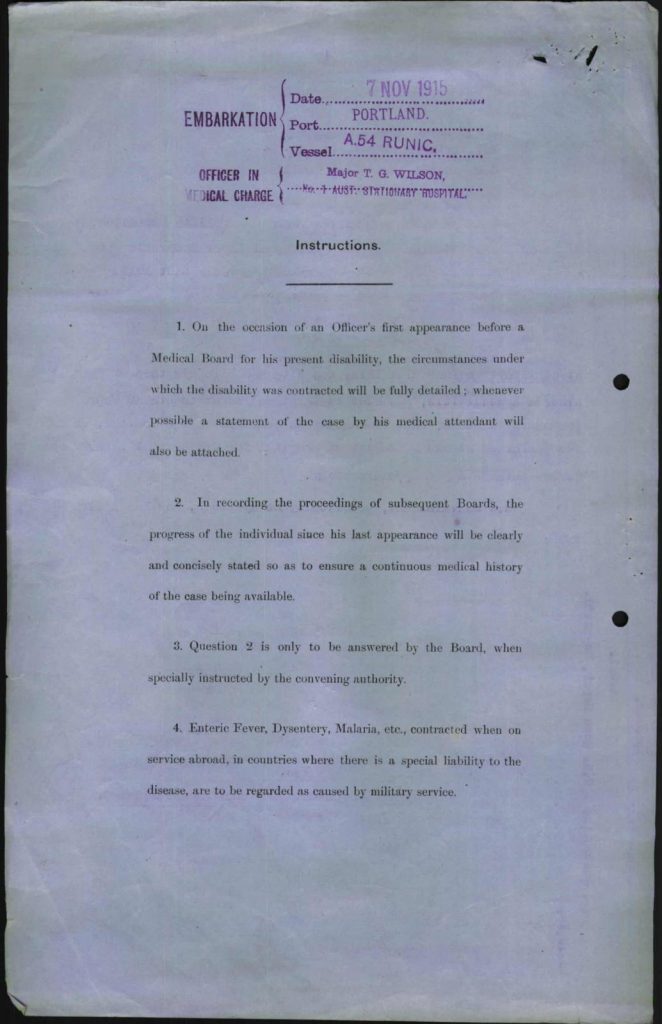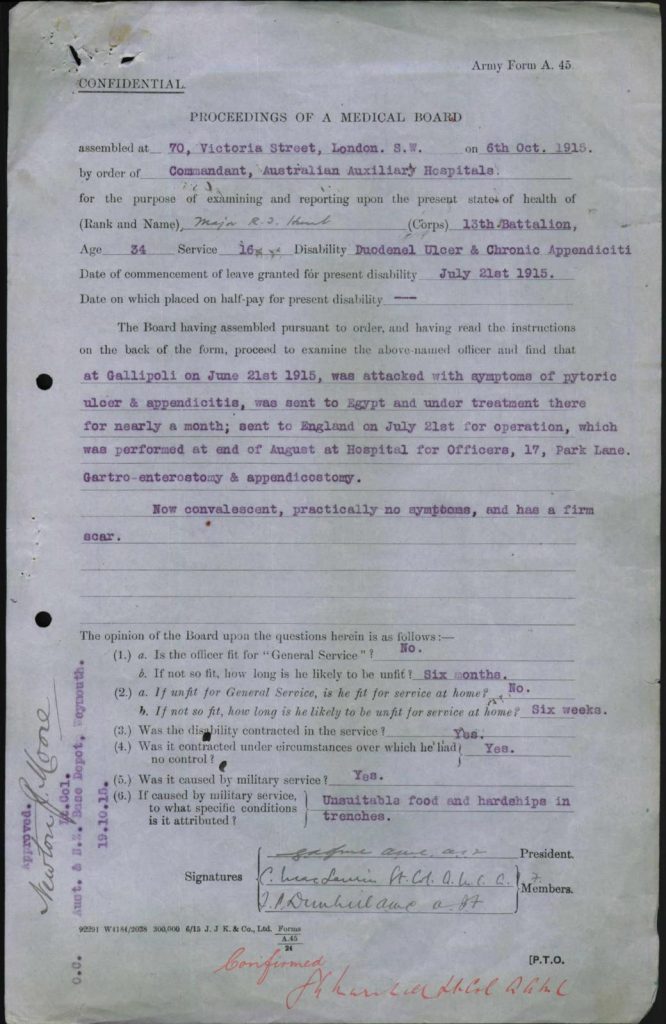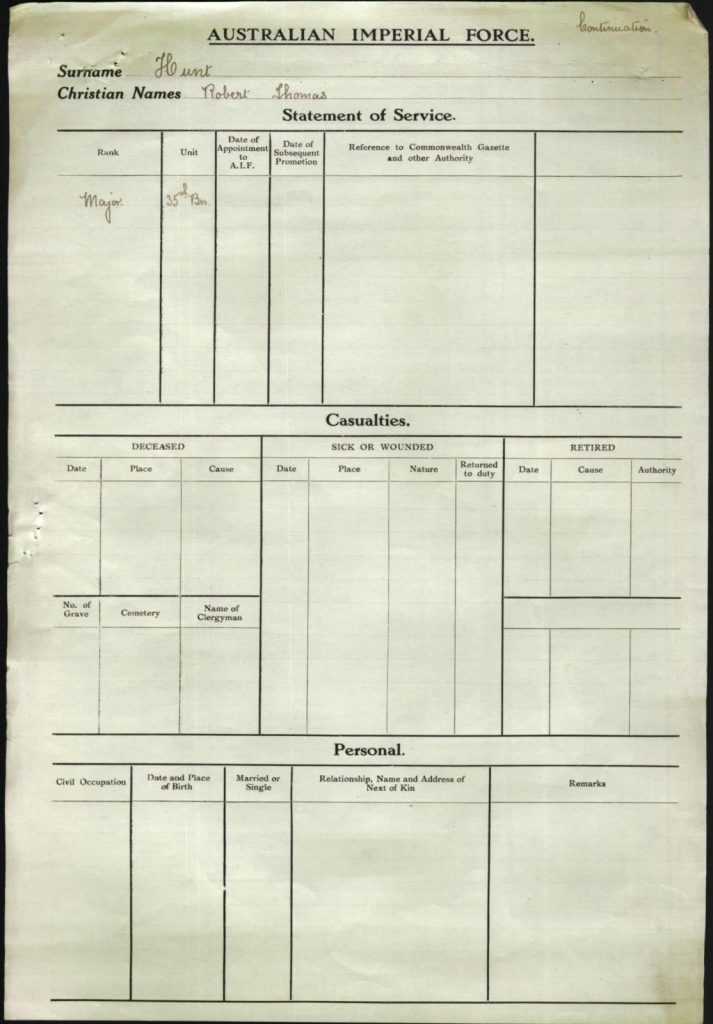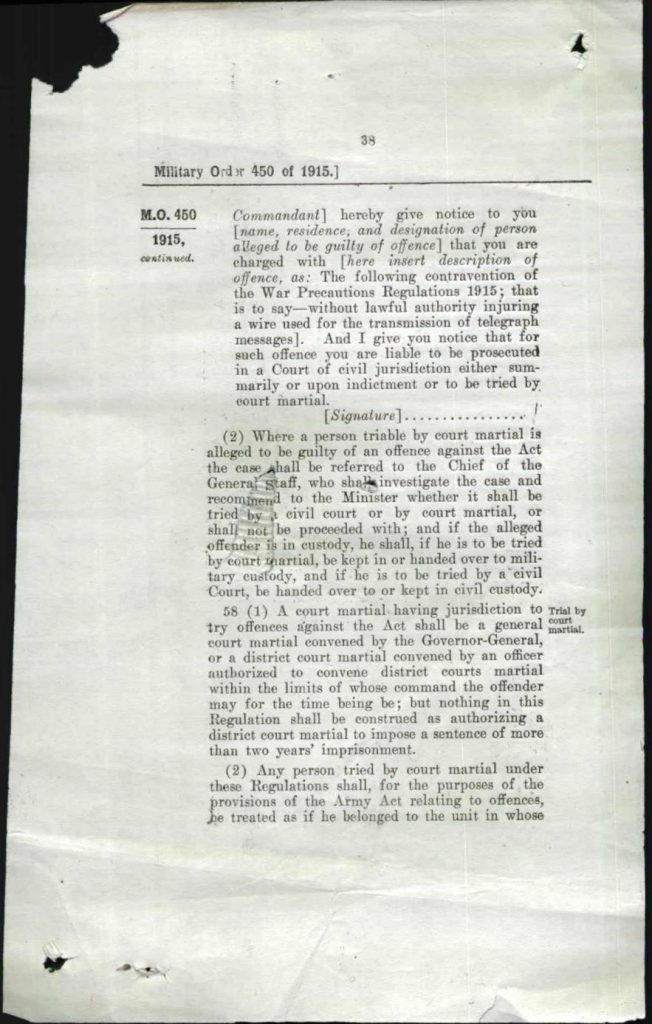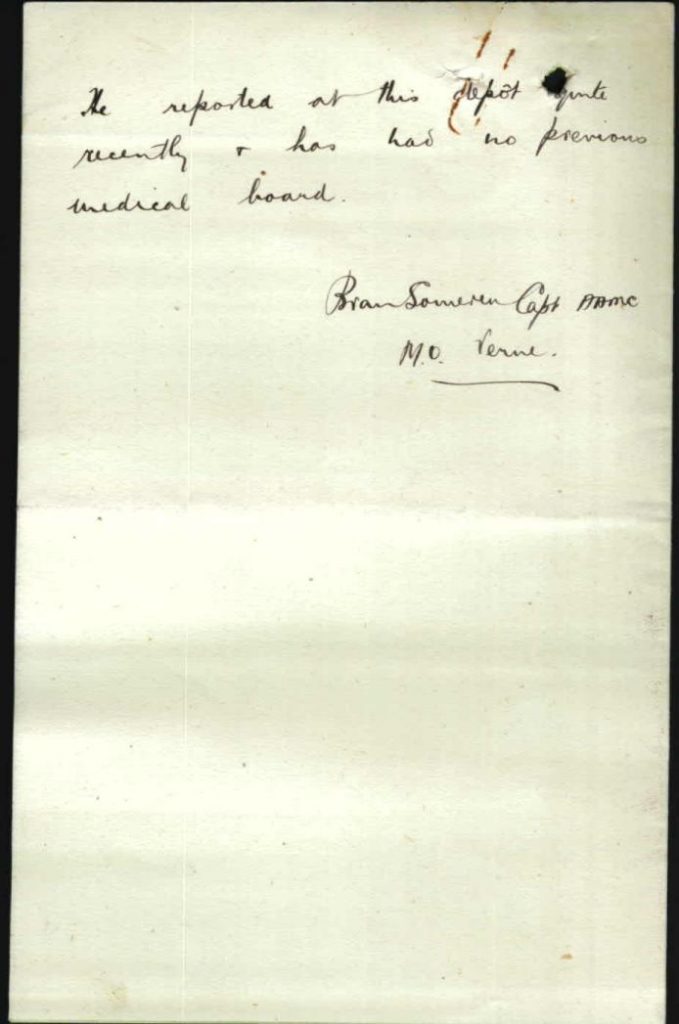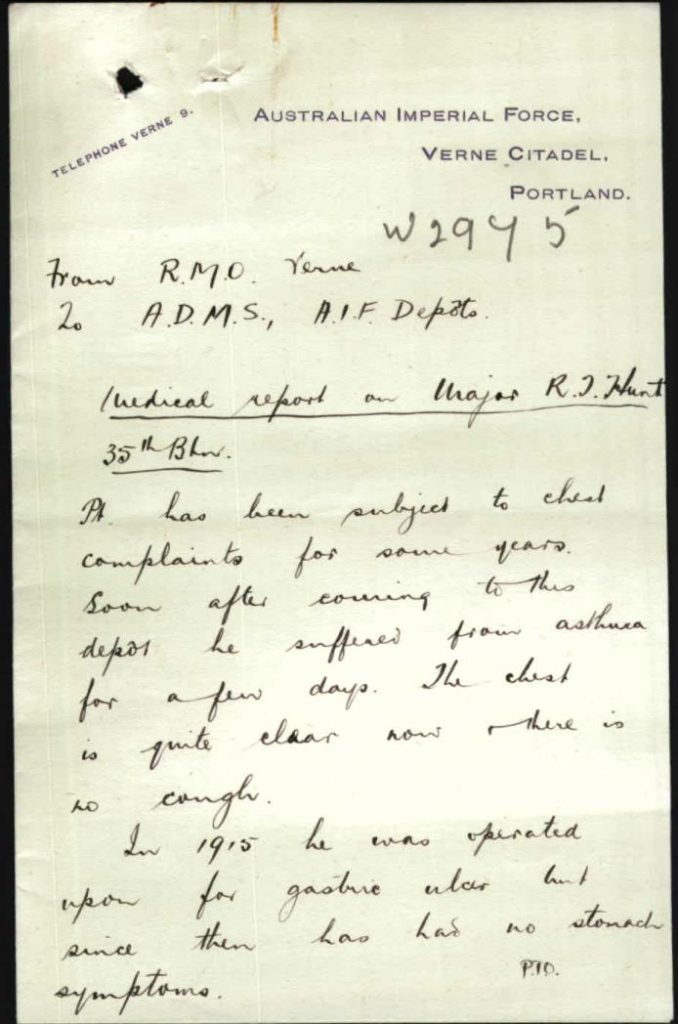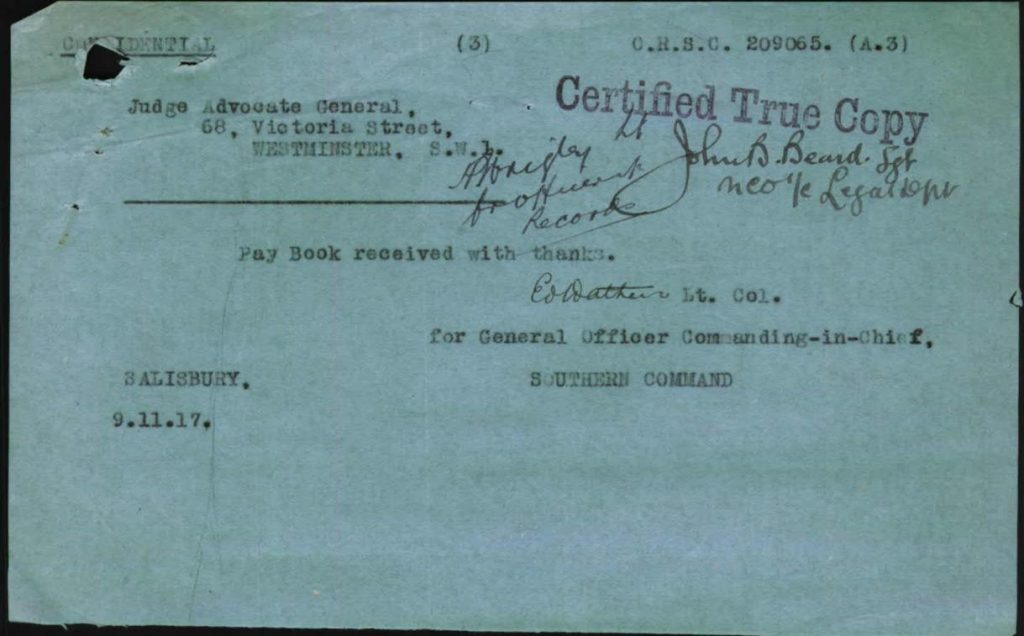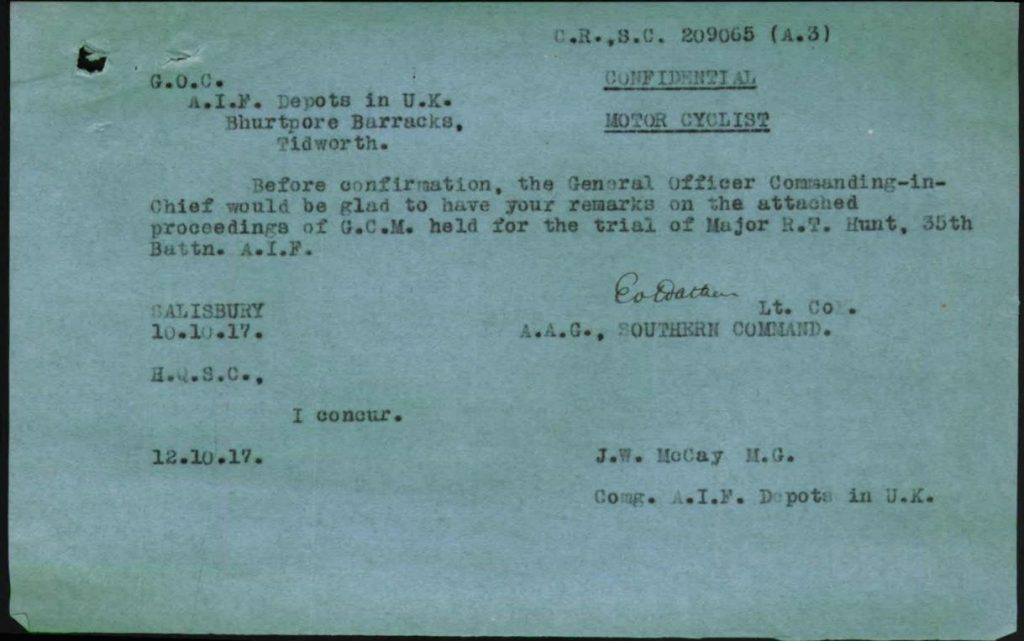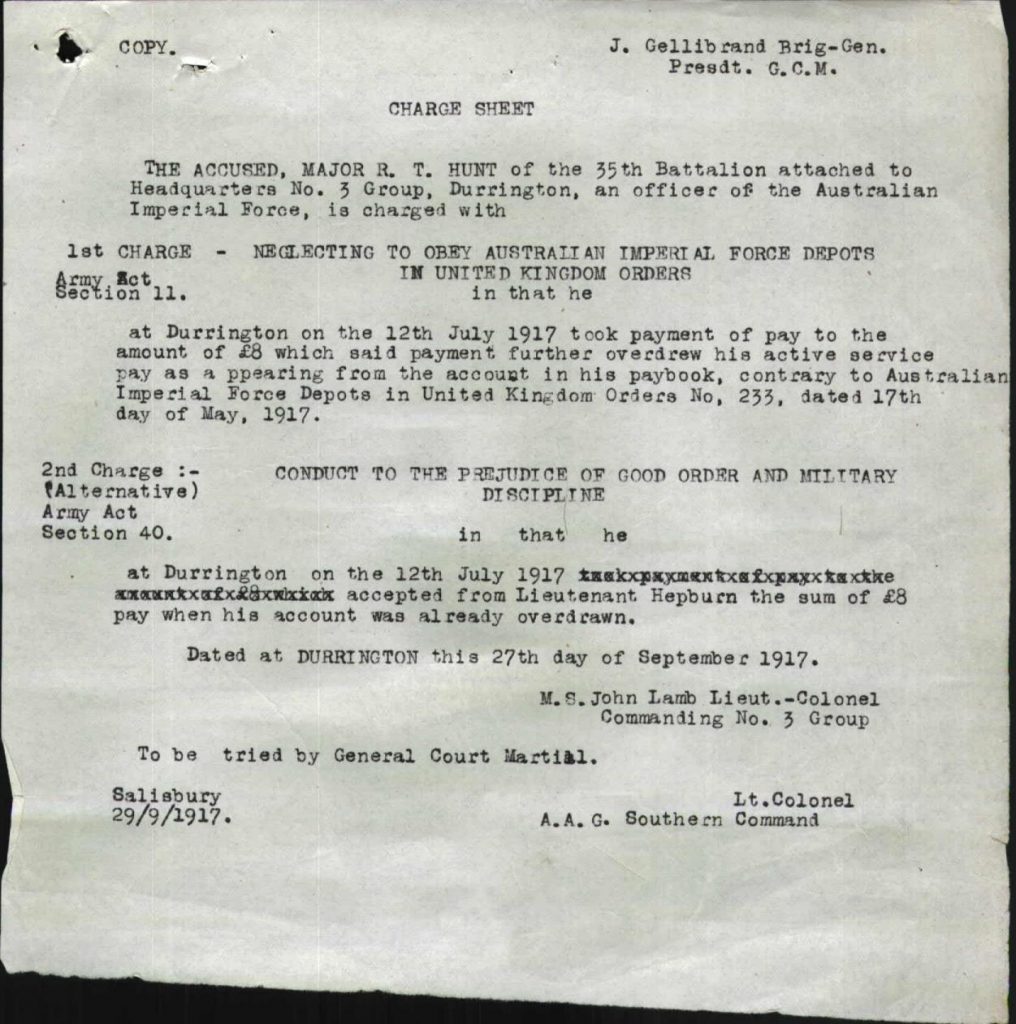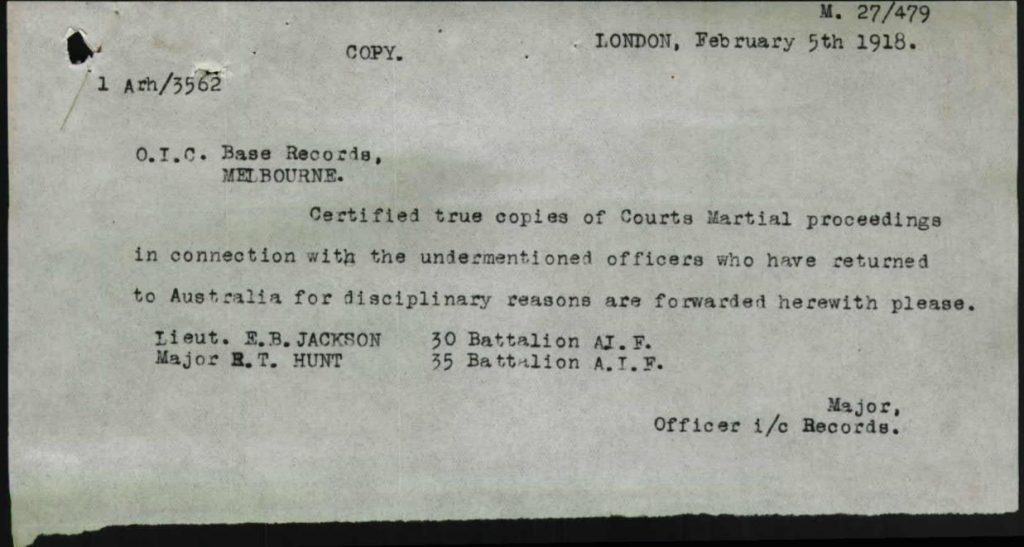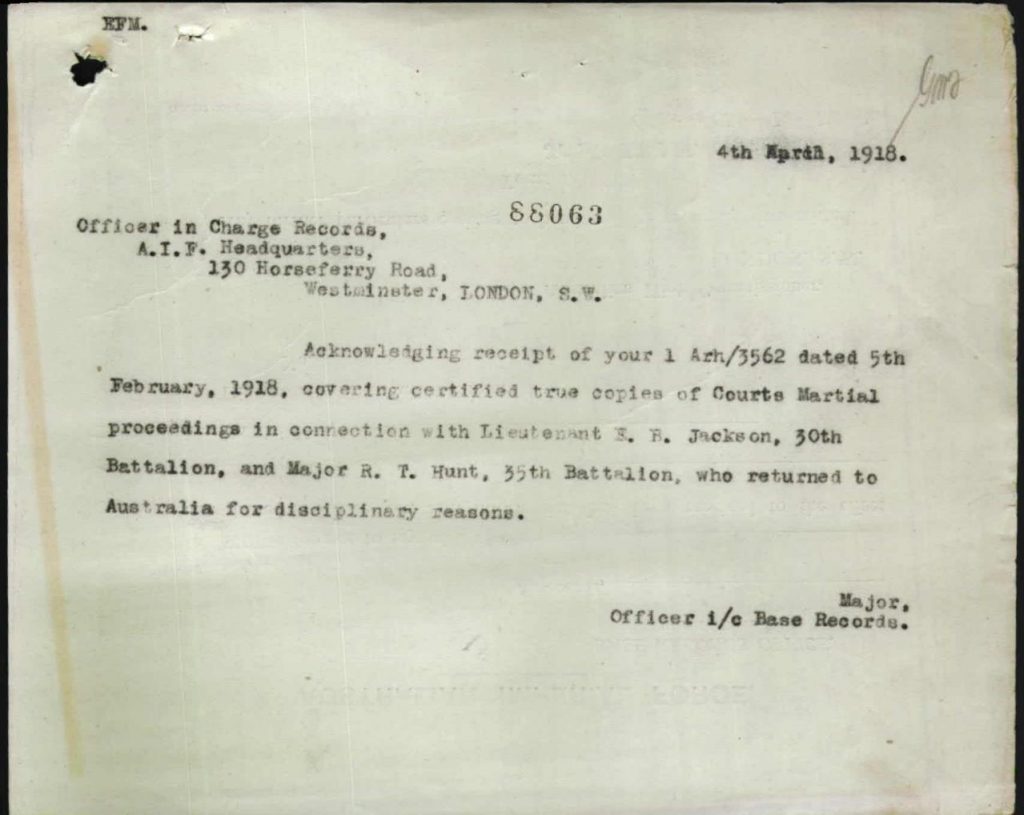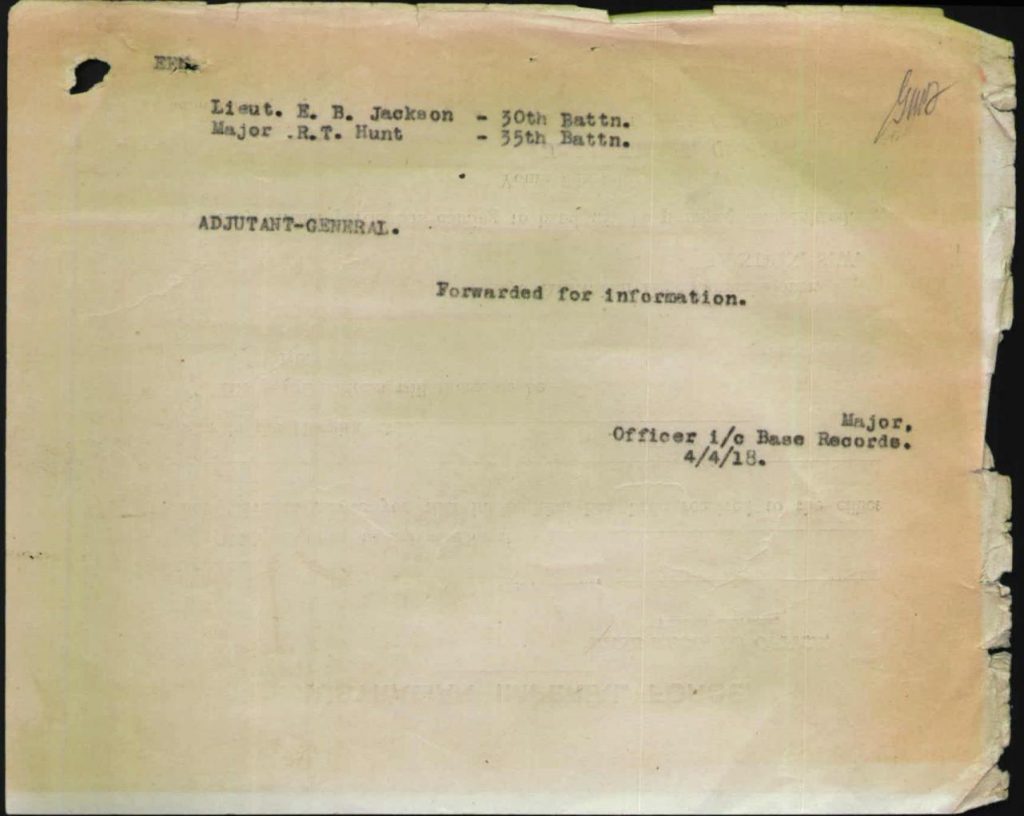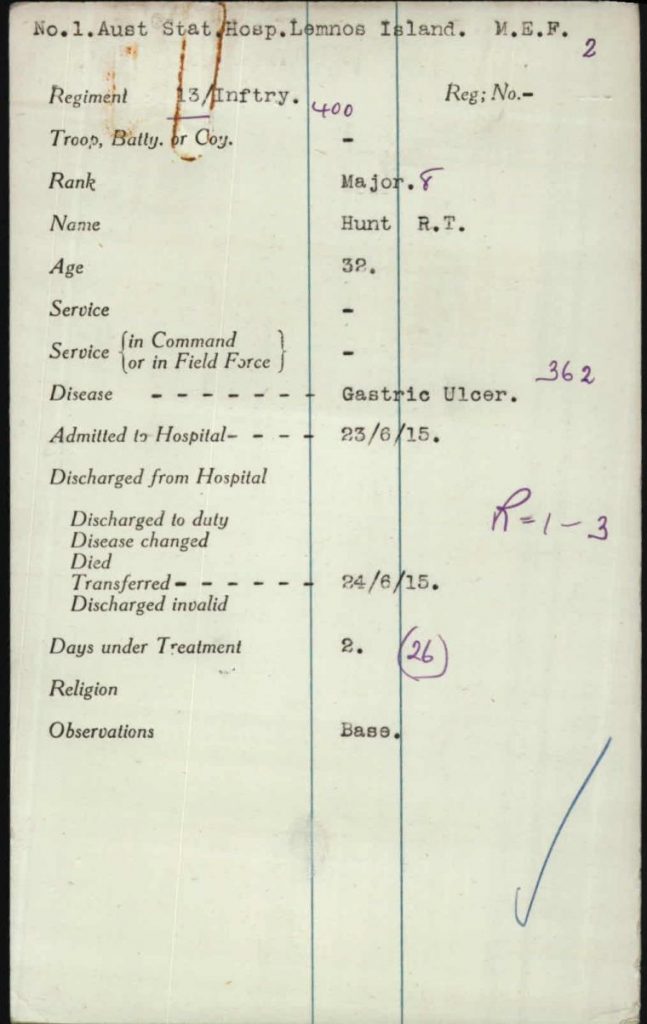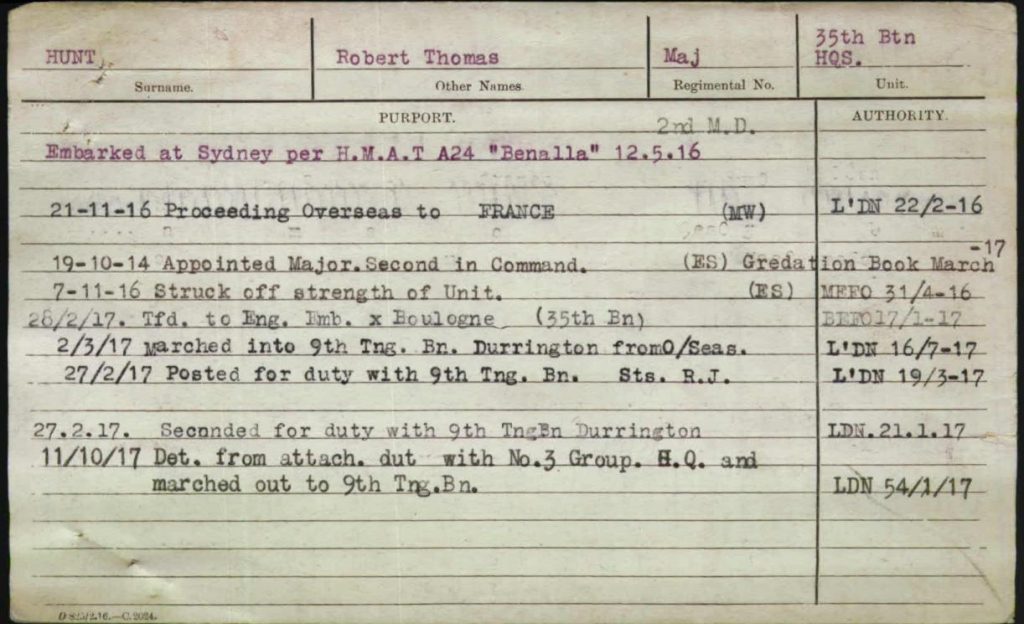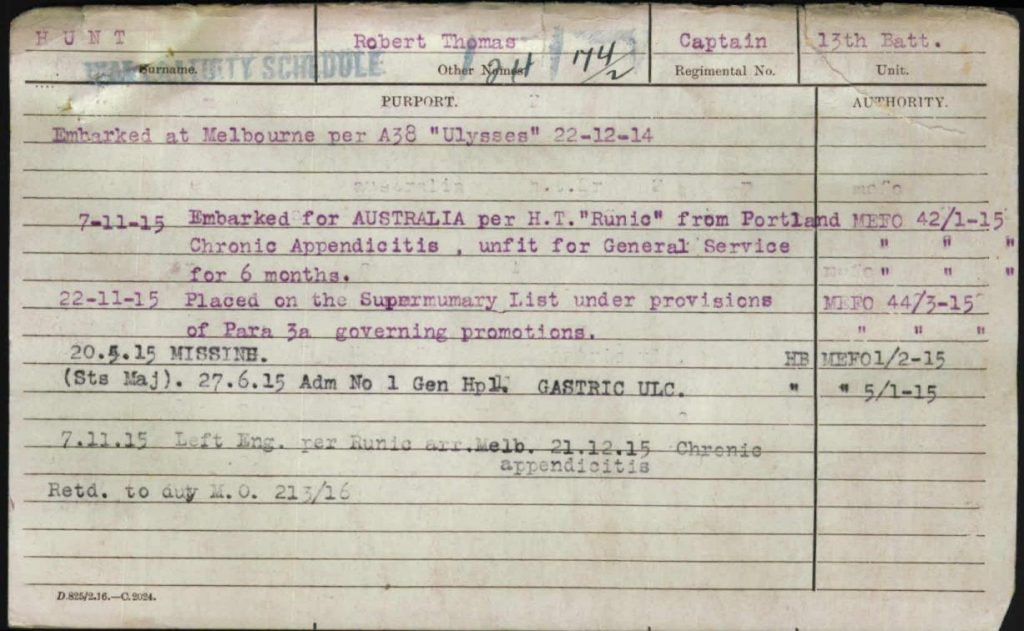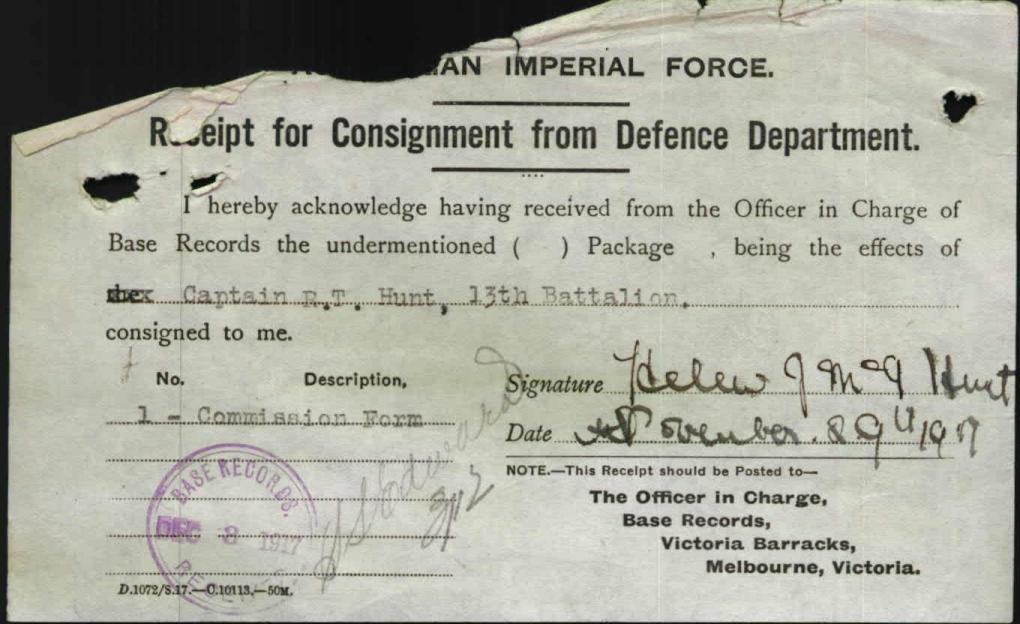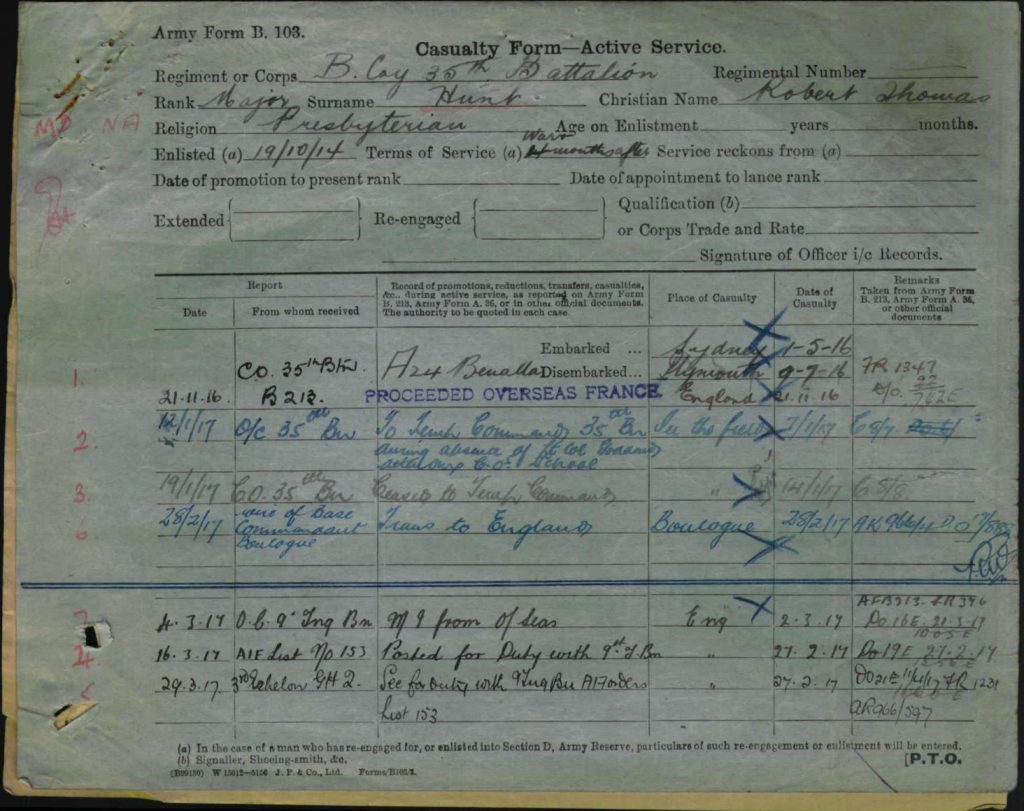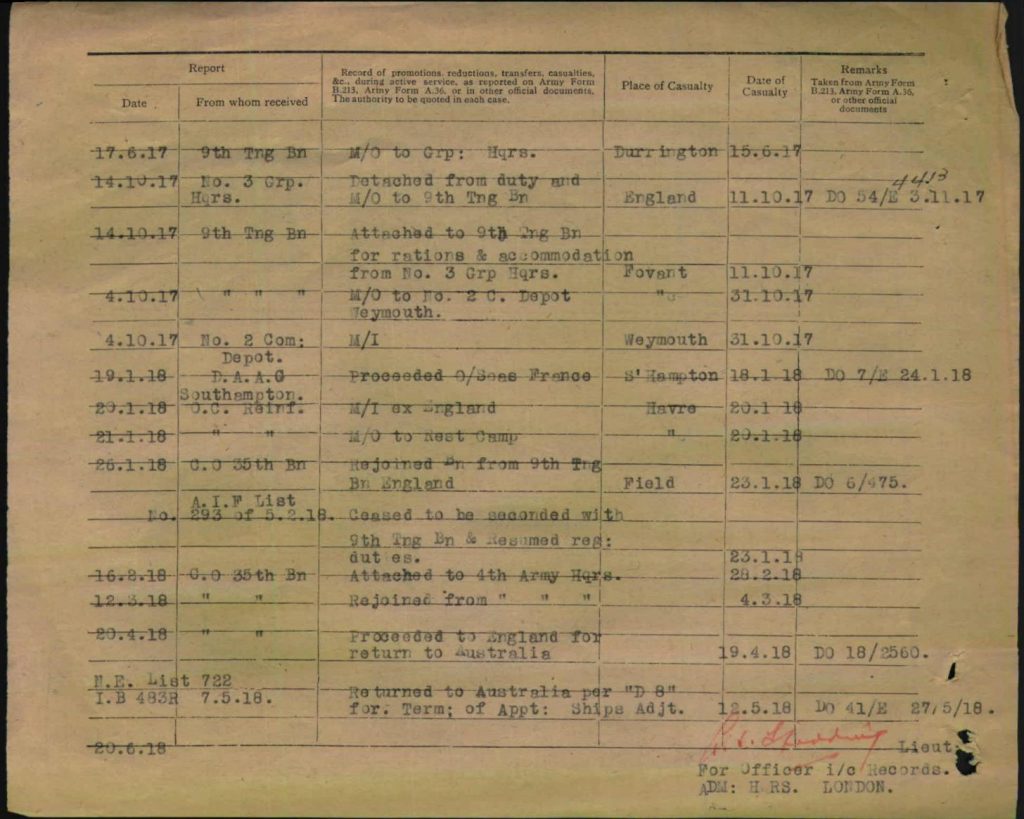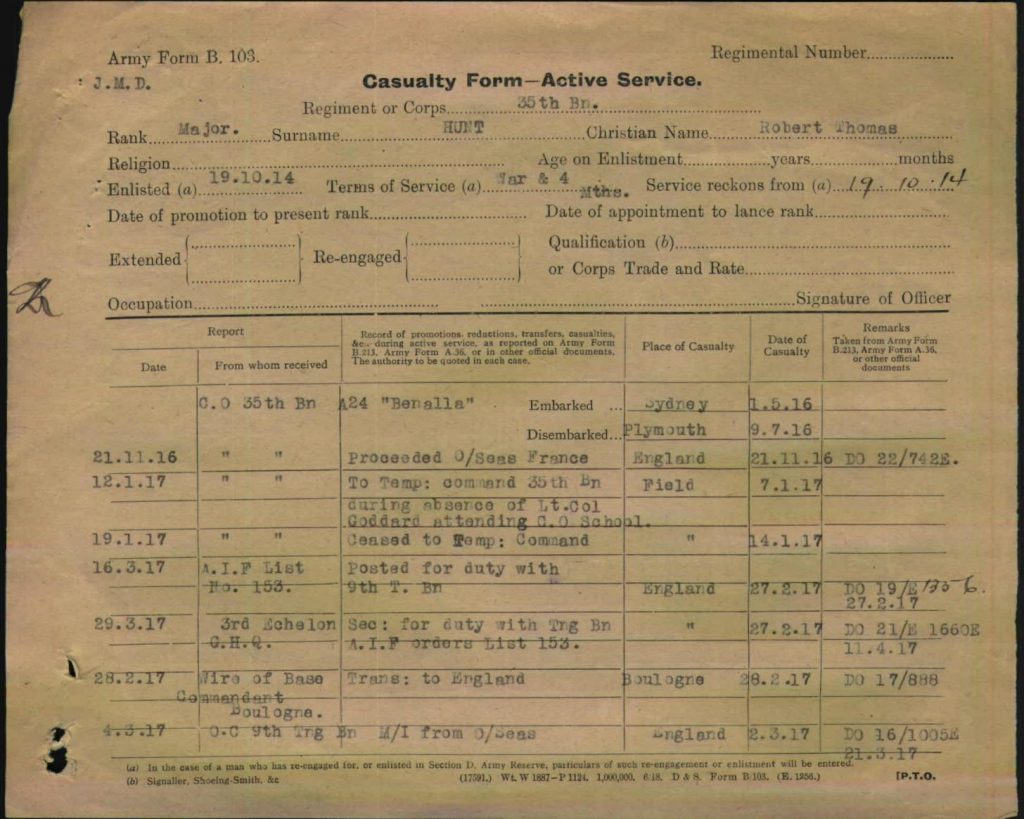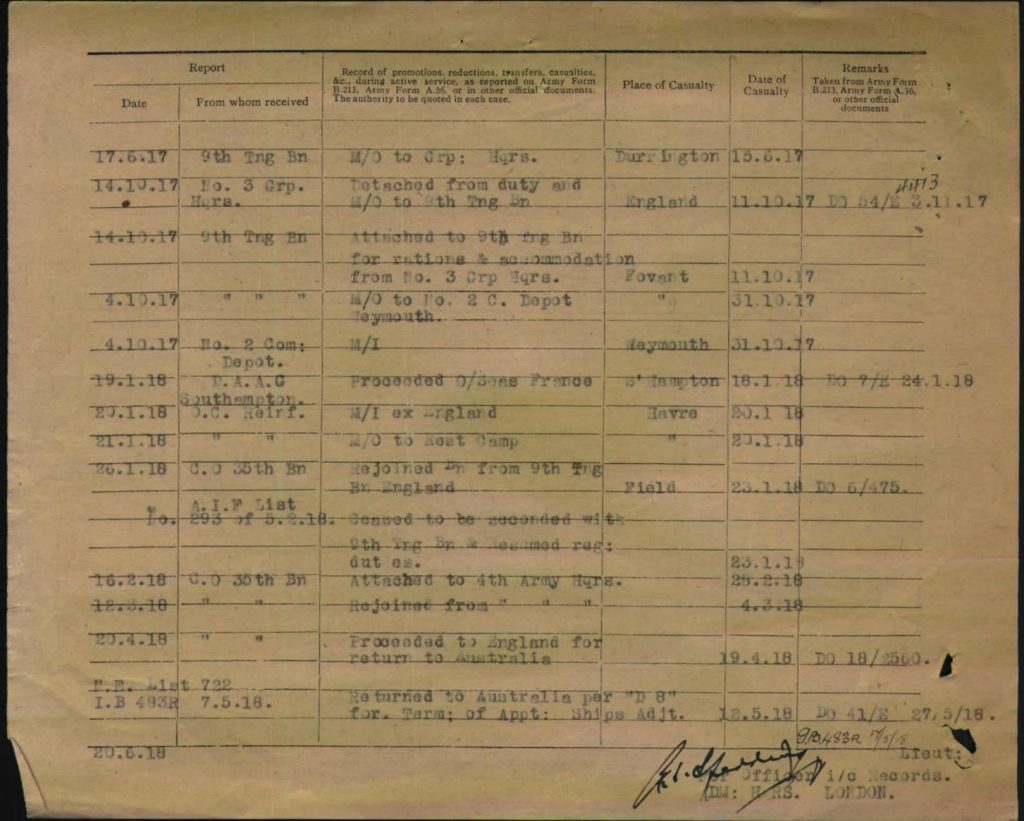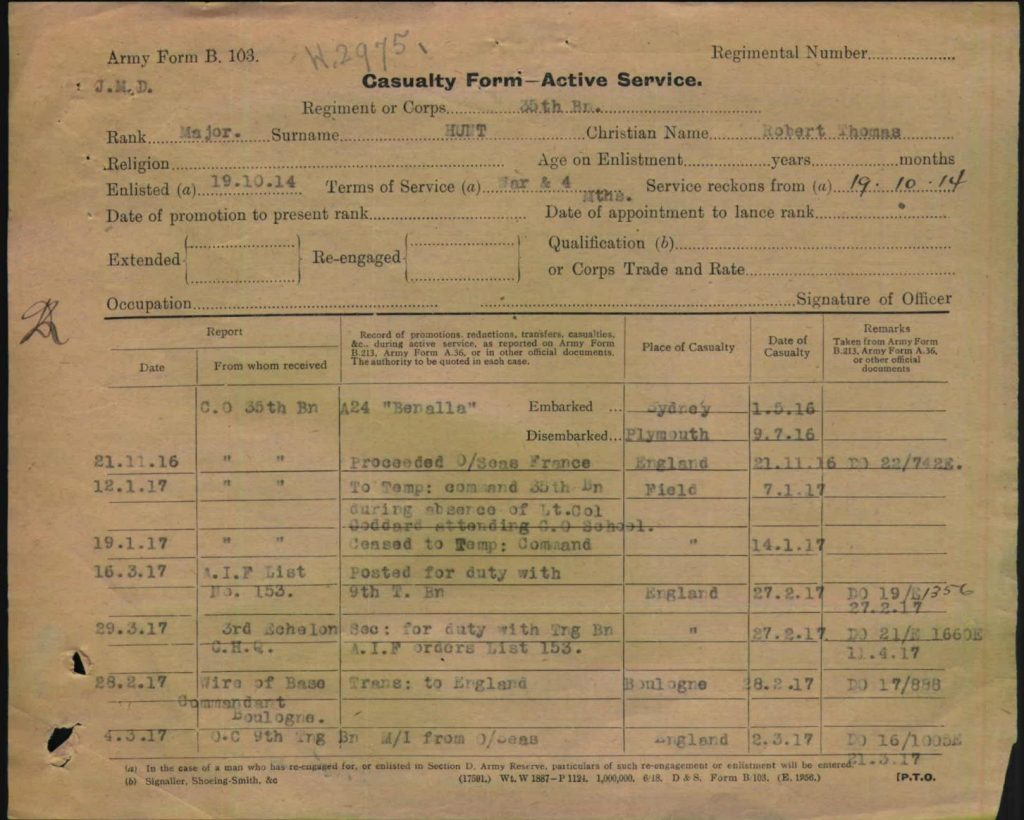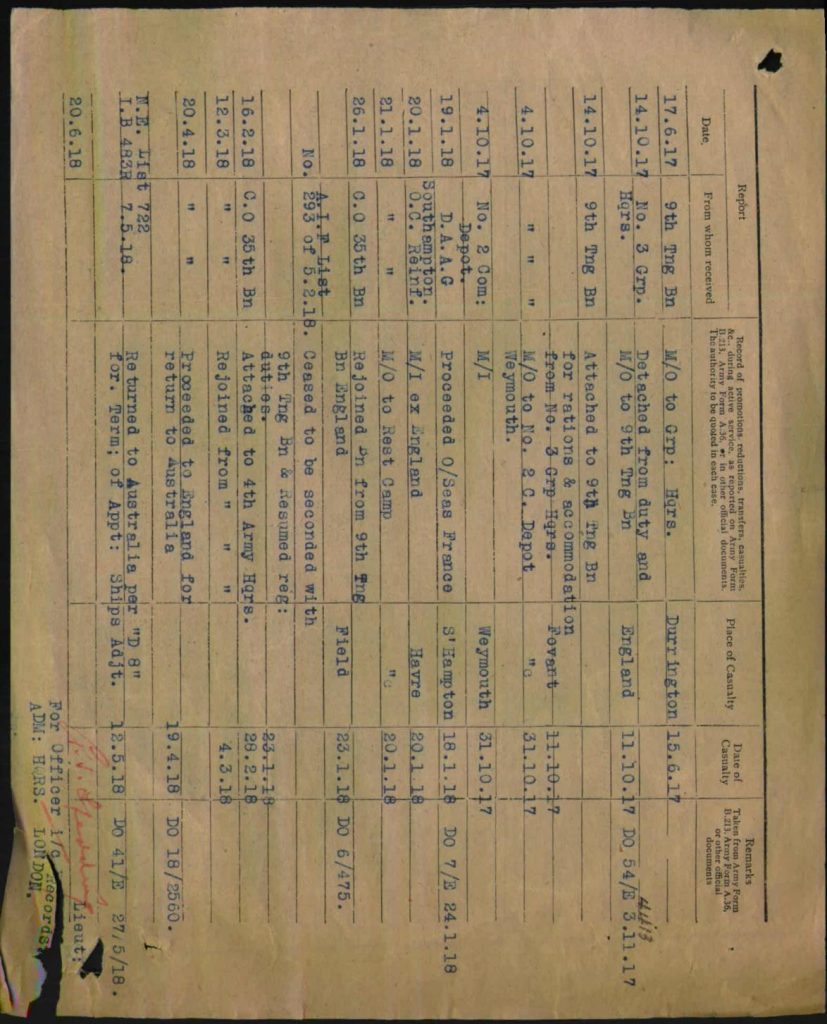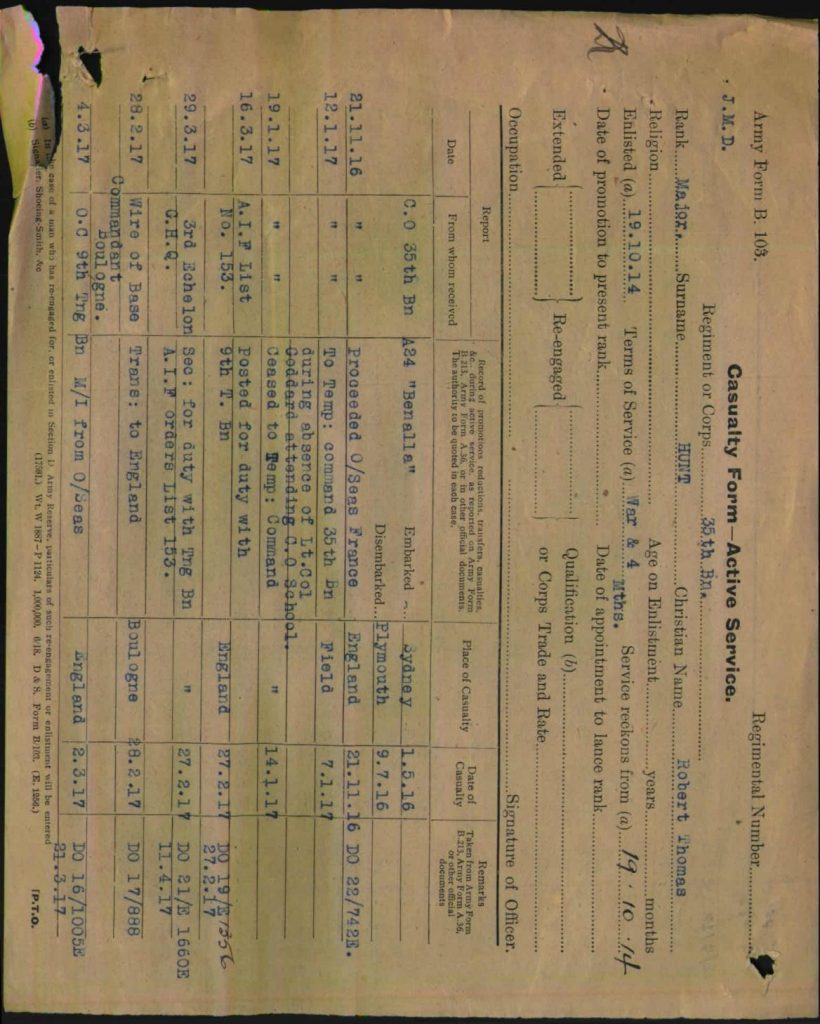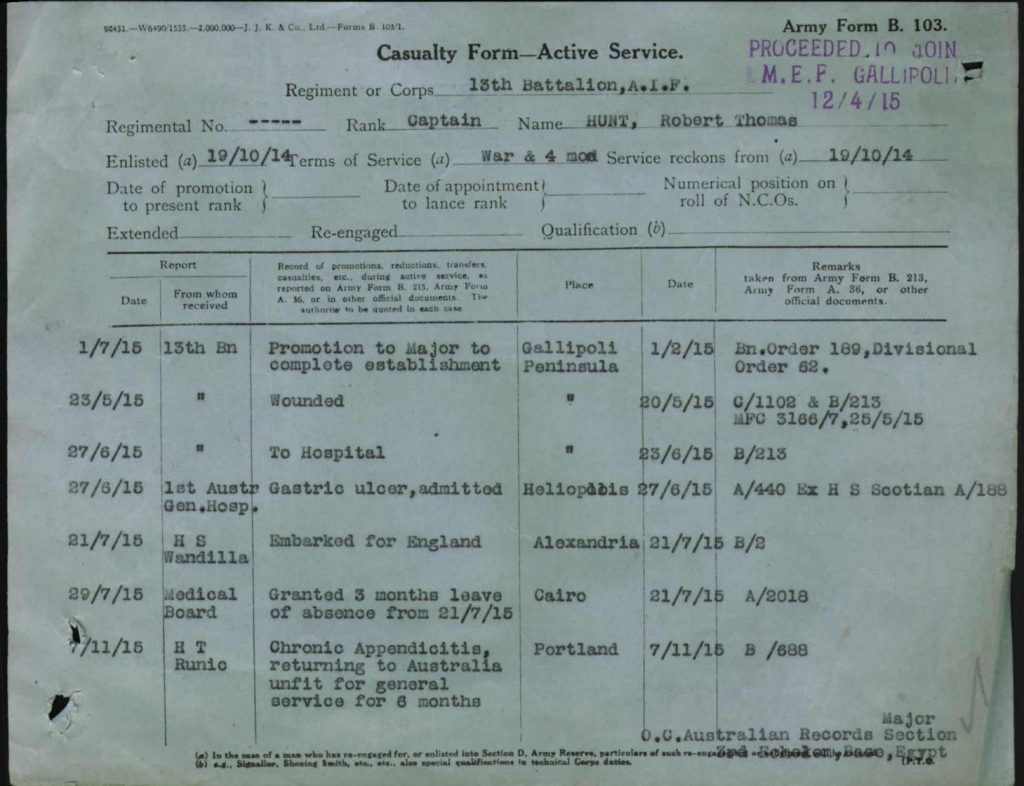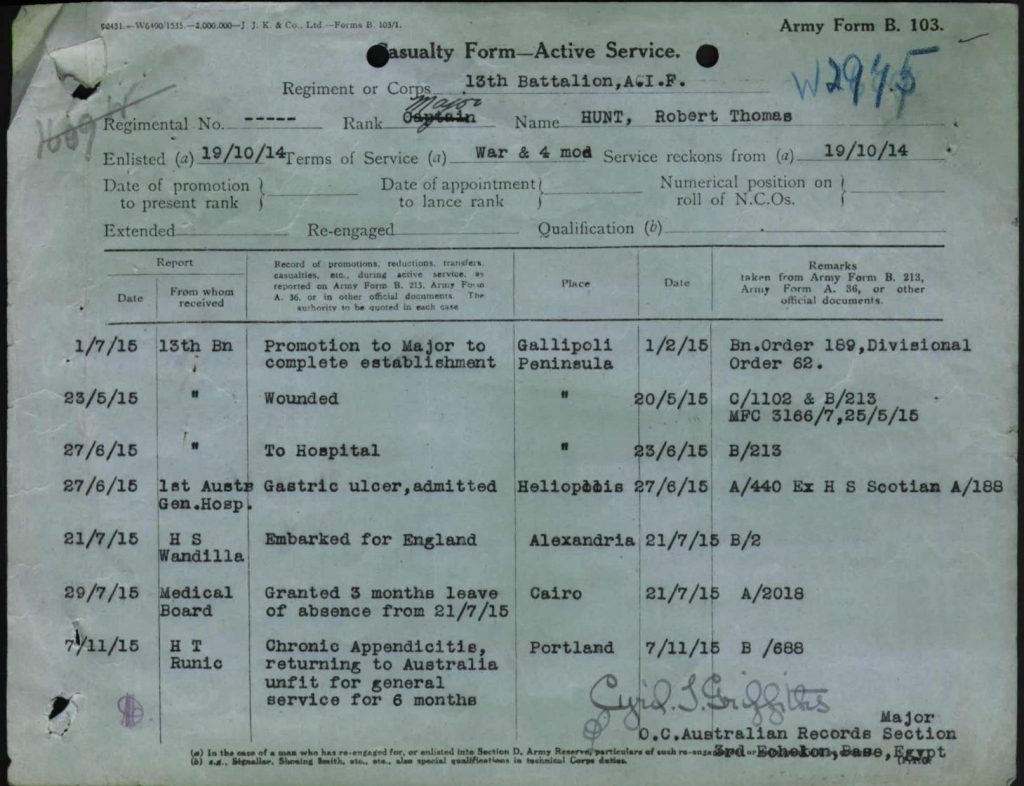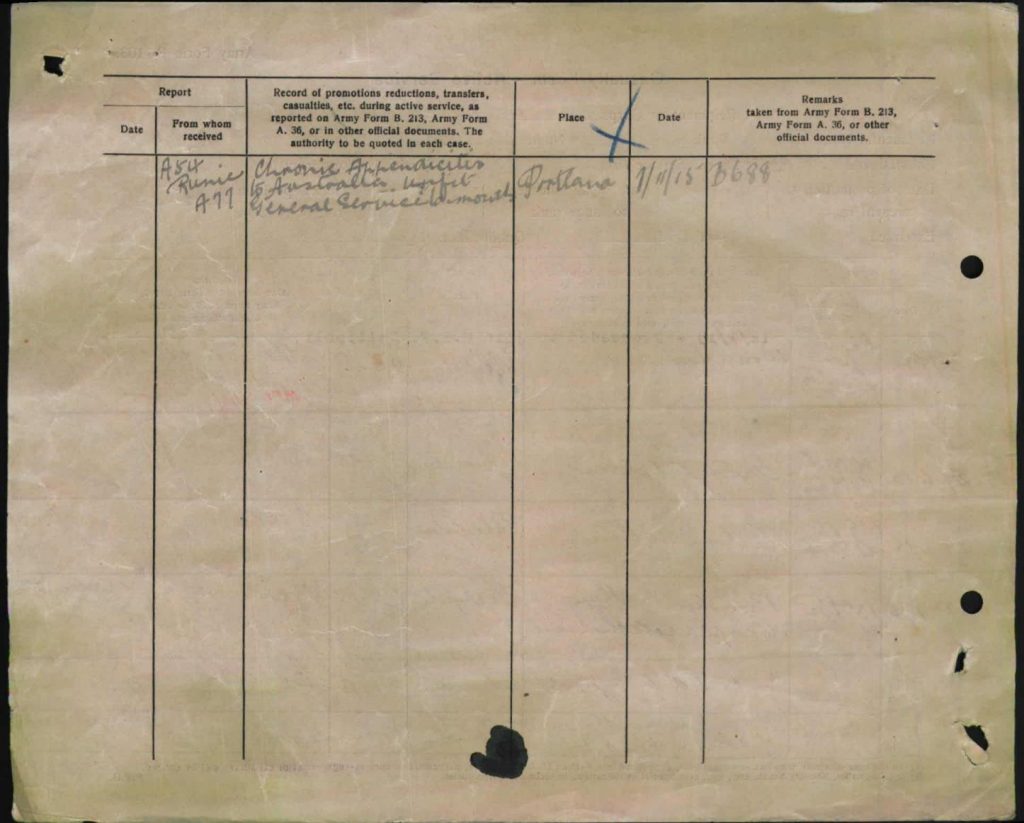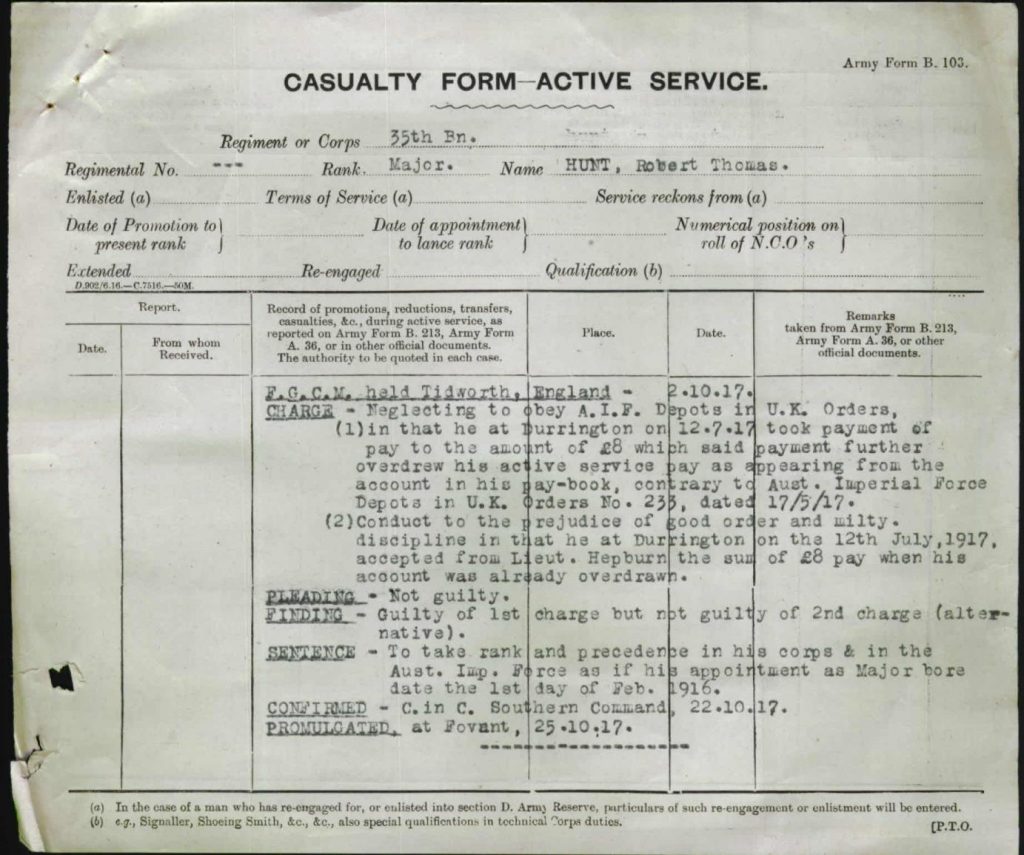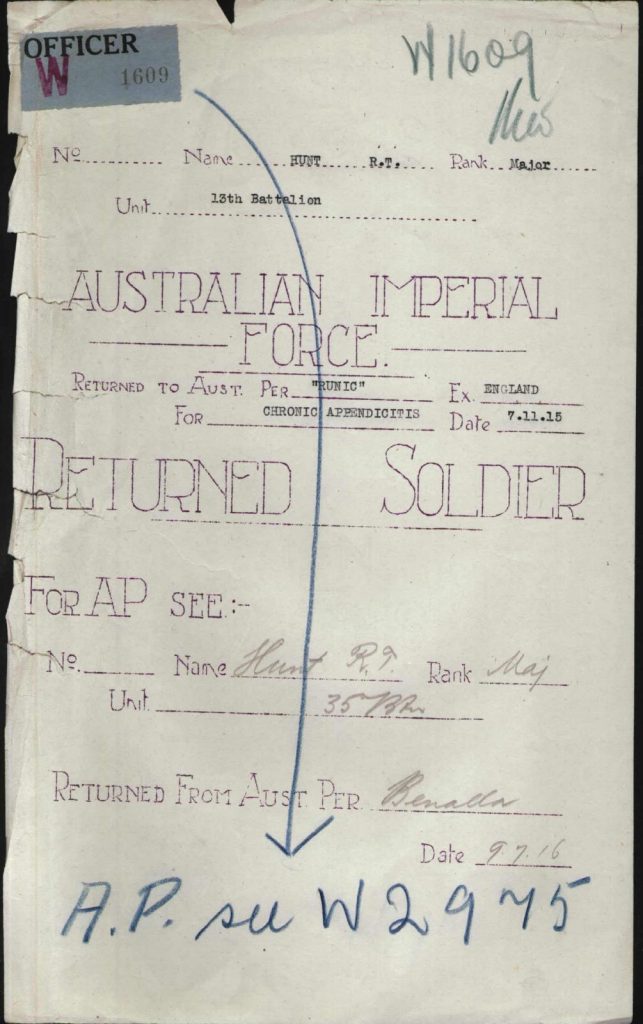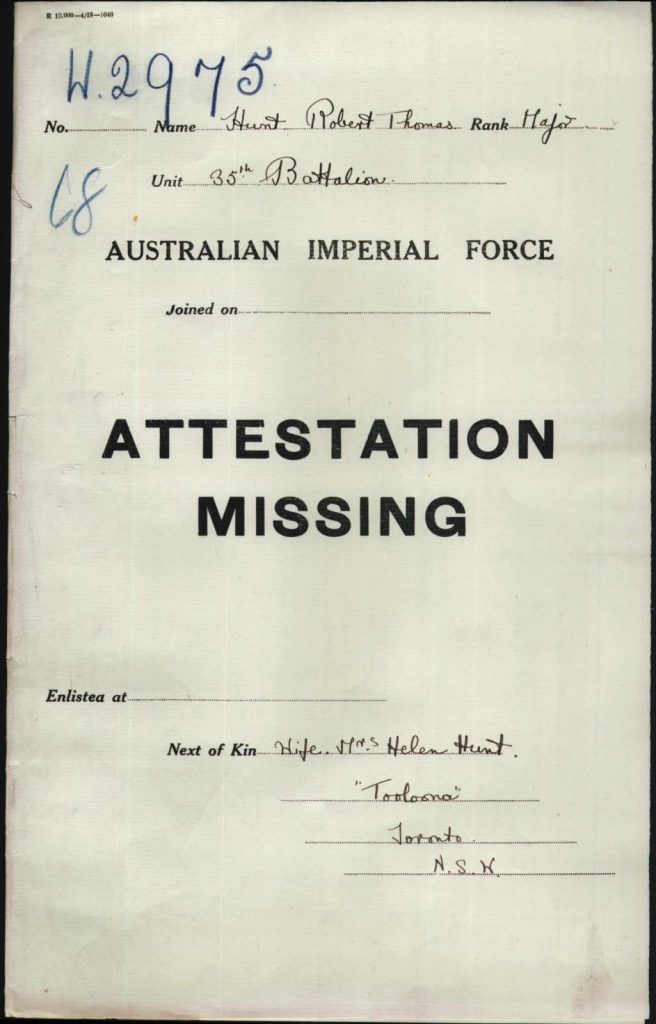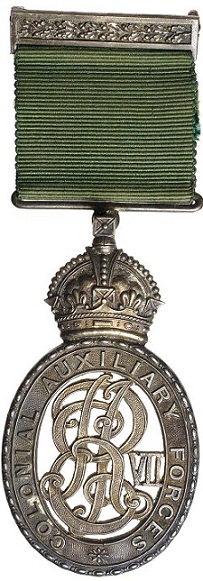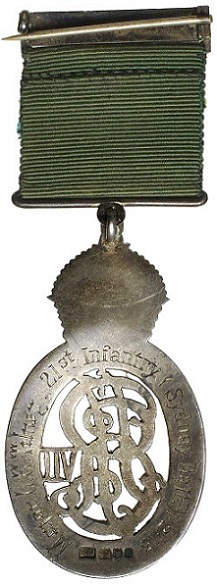35th BATTALION AIF
Private: 3140 Alan Herbert THOMPSON.
Born: 15th August 1896. Coogee, New South Wales, Australia.
Married: 1919. Dandenong, Victoria, Australia
Wife: Dorothy Charlotte Thompson. nee: Stanford. (1895-19..)
Died: 29th April 1954. Concord Repatriation Hospital. Concord, New South Wales. Death Cert:11761/1954.
Buried: 1st May 1954. Rookwood Cemetery.
Father: Joseph Thompson. (1850-1928)
Mother: Mary Thompson. nee: Elliott. (1861-1954)
INFORMATION
Alan Herbert Thompson served with the 21st Infantry Battalion in 1914 and enlisted with the AIF on the 6th October 1916 at the Royal Agricultural Showground in Sydney and was allocated to the 7th Reinforcements, 35th Battalion AIF and embarked from Sydney on board HMAT A68 "Anchisis" on the 24th January 1917 and disembarked at Devonport, England on the 27th March 1917. The Reinforcements were marched in the the 9th Training Battalion at Larkhill where the commenced training in trench warfare and settled into Camp conditions before proceeding overseas for France on the 19th March 1918 via Southampton and disembarked at Rouelles the next morning. The Reinforcements went into billets overnight and were marched out to the lines the next morning.
Alan was Taken on in Strength with the 35th Battalion in the field on the 24th of March 1918
30th March 1918
2:00 am, Arrived at CACHY and billeted in Aerodrome. 9:00 am, assembled for counter-attack and remained in formation till 5:00 pm then returned to billets. 10:00 pm, received instruction to move into the line.
(35th Battalion Diary)
4th April 1918.
North of the railway cutting Sayers Company of the 35th Battalion advanced with equal success. The Germans immediately ahead of it numbered not more than 100. As the company approached some of them ran. Lieutenant: Thomas Edward THOMPSON was wounded by a German at fifteen yards range.
(BEAN; History of World War 1 Vol V page 345) Charles Edwin Woodrow BEAN
4th-5th April 1918
The First VILLERS-BRETONNEUX
The Strength of the 9th Infantry Brigade was about 2,250 but their casualties during the 2 days of fighting numbered 30 Officers and 635 men either killed in action or missing.
9th Infantry Brigade Casualties.4th-5th April 1918
| 33rd Battalion. AIF | 3 Officers | 82 Other ranks |
| 34th Battalion. AIF | 5 Officers | 120 Other ranks |
| 35th Battalion. AIF | 9 Officers | 282 Other ranks (including 44 missing) |
| 36th Battalion. AIF | 12 Officers | 133 Other ranks (including 1 missing) |
| 9th Machine Gun Company. AIF | 1 Officer | 18 Other ranks (including 4 missing) |
16th April 1918.
’On the 16th April, the rumors of a new German Offensive against Amiens seemed to be definitely confirmed. A German prisoner, taken by the French, volunteered the that Villers Bretonneux was to be attacked the next day. The 5th Australian Division, which had come line on the night of the 6th/7th April, and held the sector from Villers Bretonneux (inclusive) to the Somme canal was warned to be ready to retake the town, if captured by attack from the north ; and other preparations and counter-preparations were made. About 4 A.M. on the 17th, Villers Bretonneux, Bois d'Aquenne, to the west of it and the village of Cachy, to the south, were heavily drenched for three hours with phosgene, mustard and irritant gasses. But no assault followed. As soon as possible the local garrison, consisting of the 6/London(58 Devon) and the 33rd Australian Battalion, was got out of the shelters in the town into the trenches around it. The gas shelling was repeated in the evening from 4 to 7 P.M., next morning and on the following days, being increased so as to include Bois I'Abbe, but with greatly reduced results. Nevertheless it was impossible for anyone to move that area without feeling some ill-effects from the mustard gas, and there were, in all, 1,074 gas casualties.’
’The gassing of Villers Bretonneux seemed to point to the probability of its not being attacked, but by this time air photographs had revealed the signs of imminent operations; an increase in the number of enemy batteries had also been noticed, while the roads were being registered by German artillery. There were, however, also indications that the Albert sector might be the objective of an attack which might extend to Arras and Vimy Ridge. On the 21st there was much air fighting near the Somme, and the famous airman Richthofen was brought down.1. That night a man of the 4th Guard Division, captured by the 8th Dvn , disclosed the fact that his formation had just relieved the 9th Bavarian Reserve Division in front of Marcelcave , and would attack Villers Bretonneux at 3 A.M. on the 23rd. Counter-preparations were continued, and the German railway centers were bombed, particularly Chaulnes .2 'No infantry assault materialized on the 23rd, two deserters came in from the 77th Reserve Division, just arrived from Russia, which had entered the line on 20th, south of the 4th Guard Division, opposite Cachy, and the French captured a gunner of the Guard Ersatz Division opposite Hangard. All these men said that the relief of the line divisions by " storm " divisions had been completed the infantry were ready to advance; the bombardment would begin early on the 24th and. last two and-a -quarter hours: and the attack would be assisted by new German tanks, which were already in position near the front line. 2 It is from the fact that tanks were used to punch a hole in the British line on either side of Villers Bretonneux, and that, in consequence, the Germans gained possession of the town and ground on either side for a short time, that the fighting on the 24th derives its interest.’
24th April 1918.
3:30 am Heavy Bombardment heard on front. 10:30 am Instructions received to be ready to move immediately. 12:00 noon Instructions are now to move on 1 hours notice. Enemy attacked at Villers-Bretonneux at 6:30 am and at 1:00 pm. Was in position of the town and the ground to the South as far as HANGARD. By midnight the 13th and 15th Brigades and re taken the lost ground and captured 1200 Prisoners, 100 Machine Guns and 2 Field Guns.
25th of April 1918.
"Dull in the morning, but fine in the Afternoon. Owing to most of the fit men being on guard or other duties, no parade was held. A number of men are still sick with gas. Enemy seems to be very quiet on this front. Further South at Villers-Bretonneux the 15th Brigade, A.I.F who counter-attacked last night repulsed a strong enemy counter-attack. The counter-attack was very successful, the captures being roughly 1000 prisoners, 100 machine-guns, a field gun and 2 tanks. This is the first time we have heard of the enemy using tanks."
8th August 1918.
At about 1:00 am a halt was made a few hundred yards in rear of the assembly tape and hot cocoa was served out to the men. The approach march was over and the Battalion on the tape, which had been ably laid by Lieutenant WARLAND and his scouts by 2.30 am. The enemy was very quiet and we suffered no casualties before Zero hour which was at 4:20 am when the barrage opened and the advance commenced as per App 11. At 6:45 am the objective was reached by the most advanced troops and consolidation commenced. Tanks from the rear came forward and and formed up at the rear with the 4th Australian Division in artillery formation. At 8:20 am as the barrage lifted the whole line went forward through us as if on parade.
(35th Battalion War Diary)
22nd August 1918.
4.45 am. Operation commences, vide report on operation (B.M.33/259/2) of 23.8.1918) vide Appendix 10. Enemy counter attack commences and continues with the result that the English troops on our left (47th Division) and 12th Division farther to the North retreated before the enemy who was making only a half-hearted attempt to gain ground on their front. The Enemy's attitude during this advance was one of hesitation. He was apparently surprised at the English withdrawal for no apparent reason and seemed to suspect it as being somewhat in the nature of a ruse to draw him on. This is the observation of the C.O. Right Battalion who viewed the course of the action from his command post at L.18.a.2.3. The result of these operations was to leave the left flank of the Brigade entirely "in the air" as the English troops became very demoralized during the process of the counter attack - App.10
2.30 p.m. Verbal Orders received from 3rd Australian Division for the Brigade to undertake an operation involving the capture of Bray-sur-Somme and the subsequent exploitation to the Western bank of the Somme running North and South through Squares L.18. and 24.
4.p.m. Above operation postponed until tomorrow morning for the following reasons - Our line is within 150 yards of the Western outskirts of Bray which are known to contain many machine guns. The ground on which our front line lies is a glaces slope running Eastwards towards the village. Any movement of even an individual in the vicinity of our front line and for some distance in rear of our front line immediately provokes enemy small arm fire. It would be impossible to rush BRAY without a barrage. It would be equally impossible to barrage the Western outskirts of BRAY without the same time bombarding the area in which our front line lies.
If the operation were performed during the hours of daylight out troops emerging from the Eastern outskirts of the village would come under the direct observation and fire of all arms from the high ground in L.11. L.17. and L.23. and would undoubtedly be held up in the low ground in L.16.a.&c. There would be no advantage in holding a line in L.16.a.& c. and our troops would in all probability be compelled to evacuate it after having suffered many unnecessary casualties.
This operation is now to be undertaken tomorrow morning early under cover of darkness and with the assistance of an artillery barrage which will start on the Western outskirts of BRAY and creep through to the Eastern outskirts whilst the high ground in L.17. and L.23. is being bombarded by Heavy Artillery. The 11th Brigade will co-operate by conforming to our advance on our Northern Flank. This operation finally cancelled owing to enemy counter attack referred to in Appendix 10.
9th Infantry Brigade War Diary.
Alan was Wounded in Action on the 22nd of August 1918 where he was treated for Gas Poisoning by the 10th Australian Field Ambulance and evacuated to the 61st Casualty Clearing Station before being admitted to the 1st Australian General Hospital at Rouen. Alan was discharged from Hospital and granted leave in France from the 23rd November until the 7th December 1918 and was marched back in at Sutton Veny England on the 28th January 1919 and returned to Australia on board the "Plassy" where he was discharged from the AIF on the 2nd June 1919.
Family Information
Alan was a single 20 year old Clerk at Randwick Council Chambers upon his enlistment with the AIF.
Joseph Thompson born 5th February 1850 at Lisdoo, Kilskeery, County Tyrone, Northern Ireland and died on the 27th September 1928 at Paddington, New South Wales
Mary Elliott born 16th June 1861 at Moorfield, Kilskeery, County Tyrone, Northern Ireland and died on the 24th September 1938 at Rydalmere, New South Wales

Joseph Thompson. (1850-1928)

Mary Thompson. nee: Elliott. (1861-1954)
(Family Information and photos: Brad Thompson June 2020)
Military Records



















© Commonwealth of Australia (National Archives of Australia)
Under Construction: 01/06/2020.

